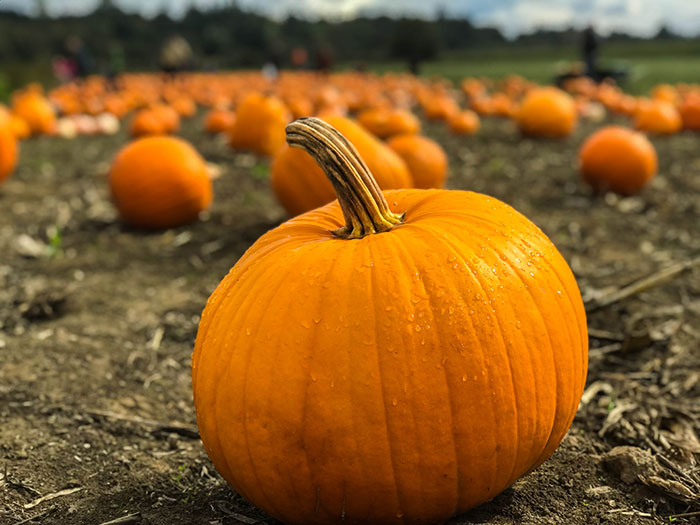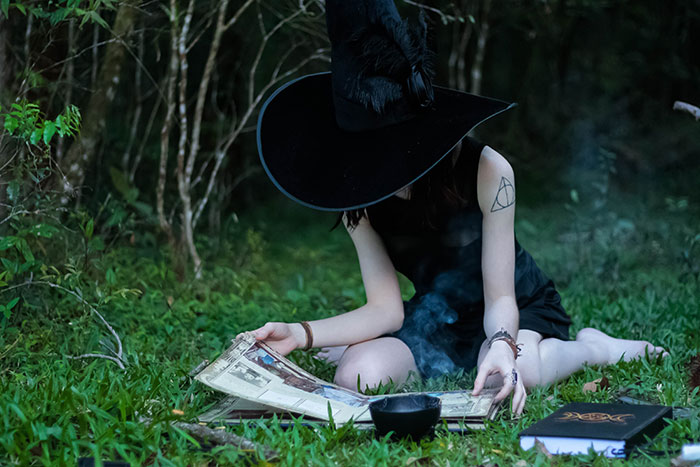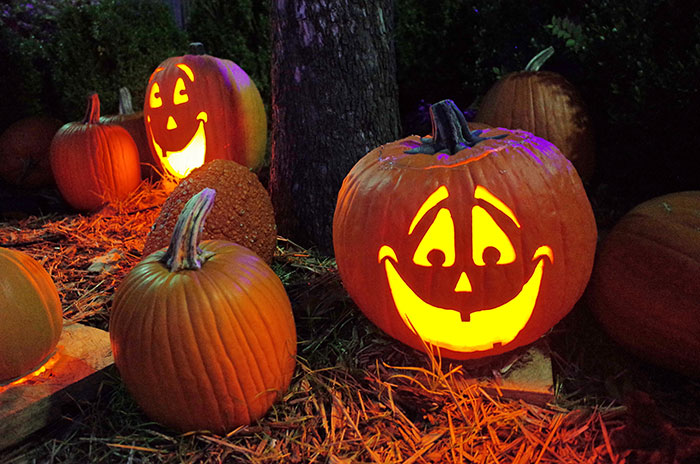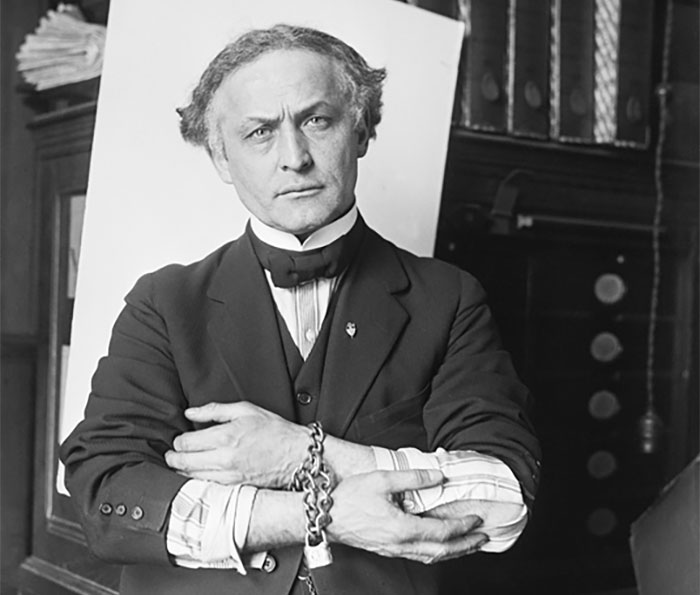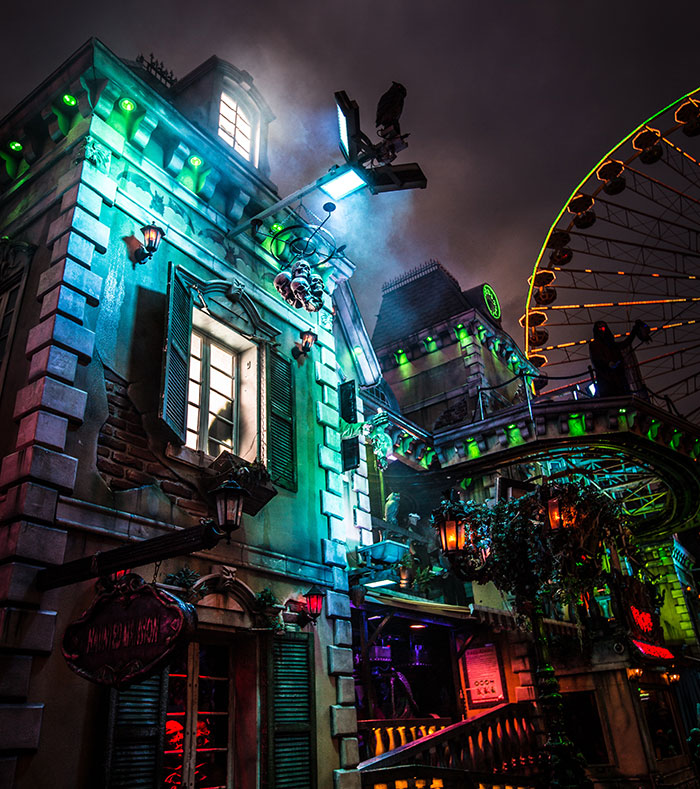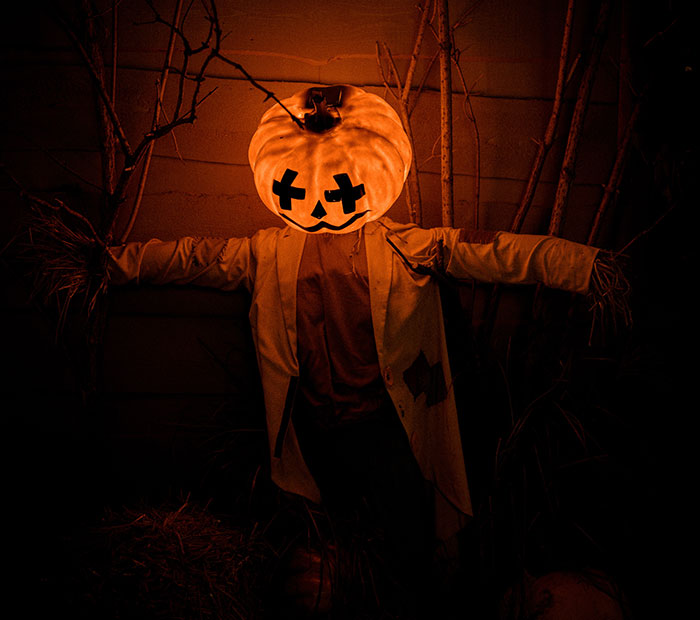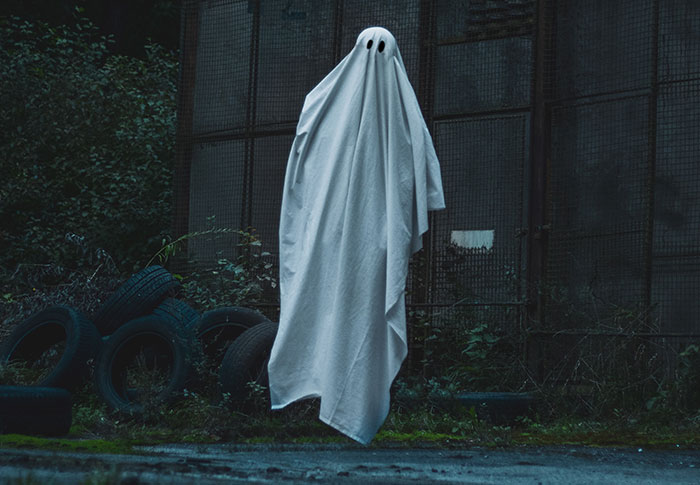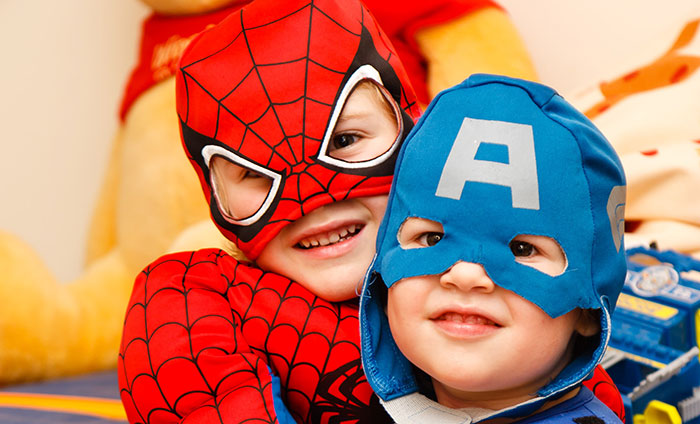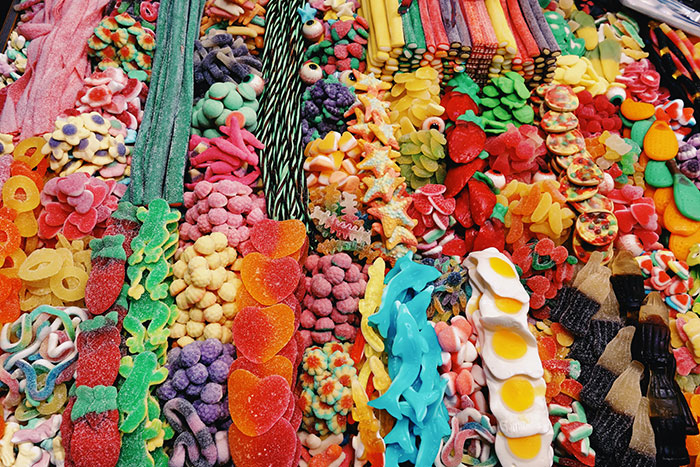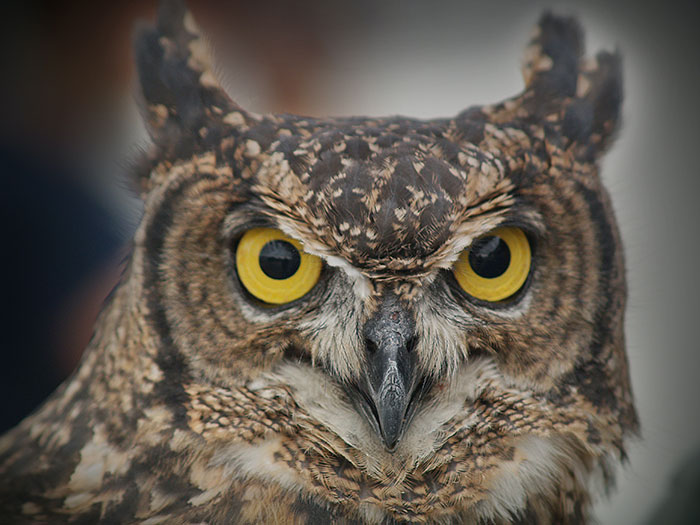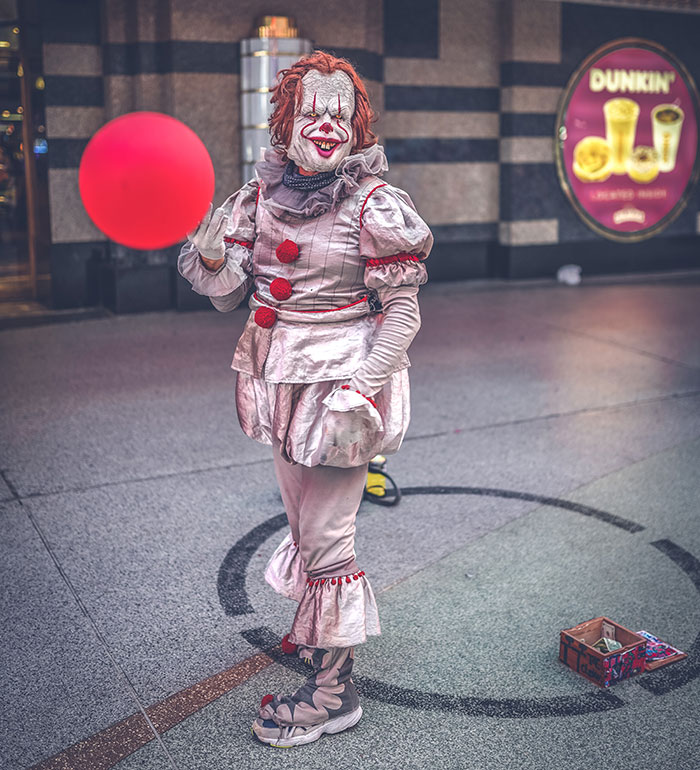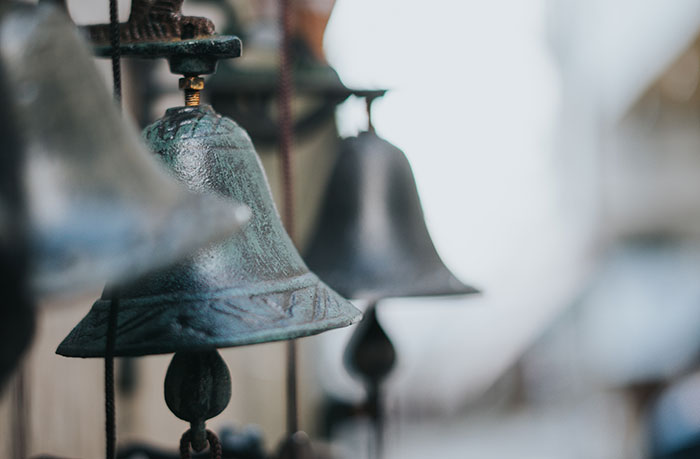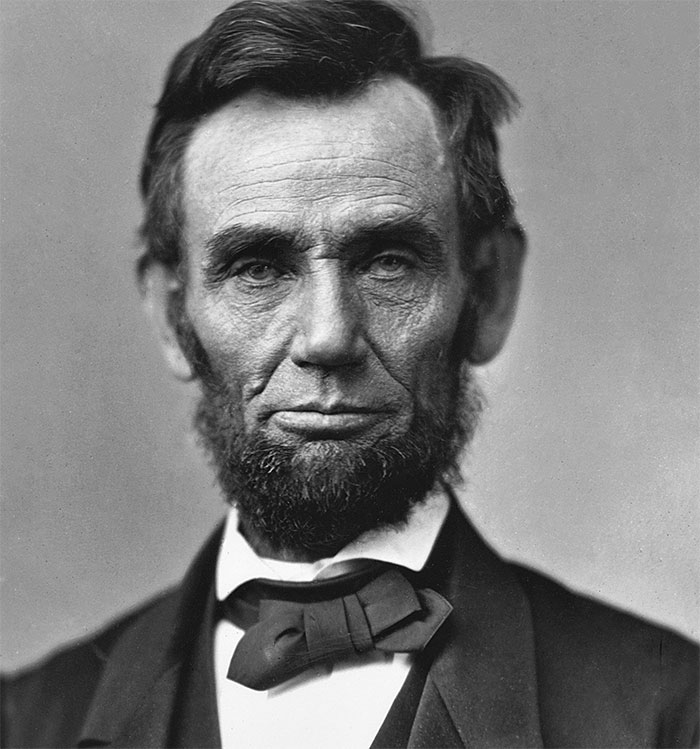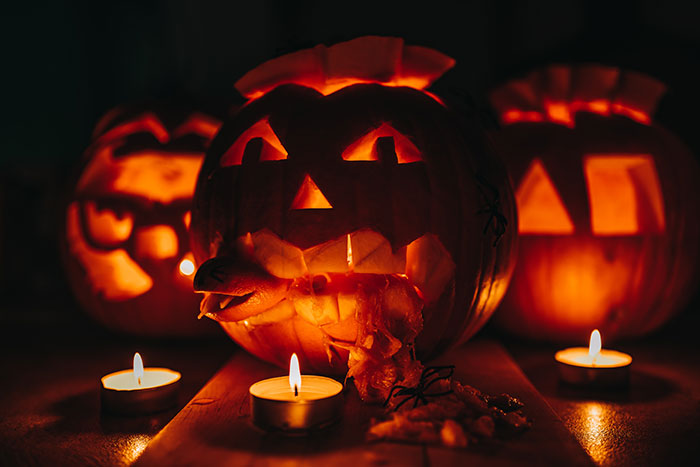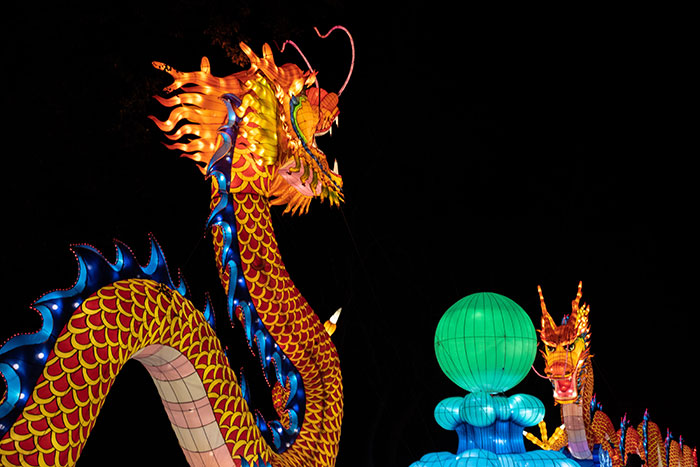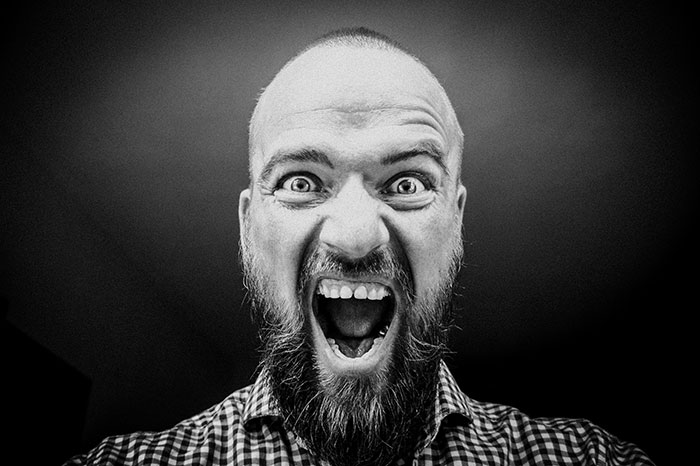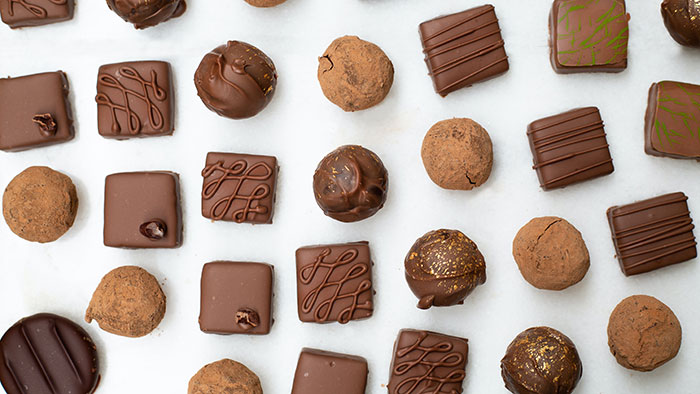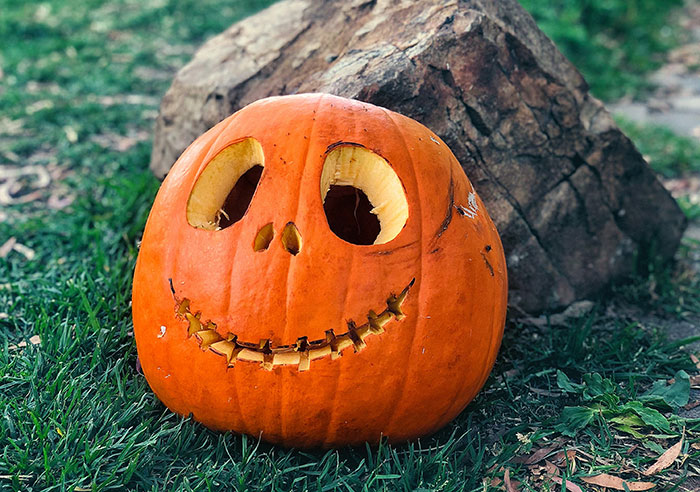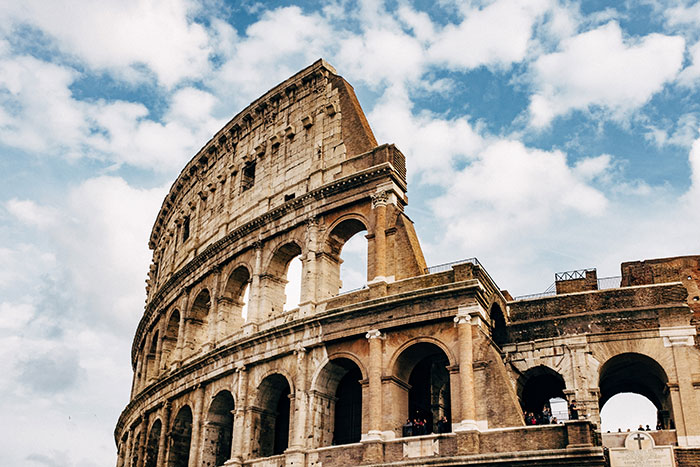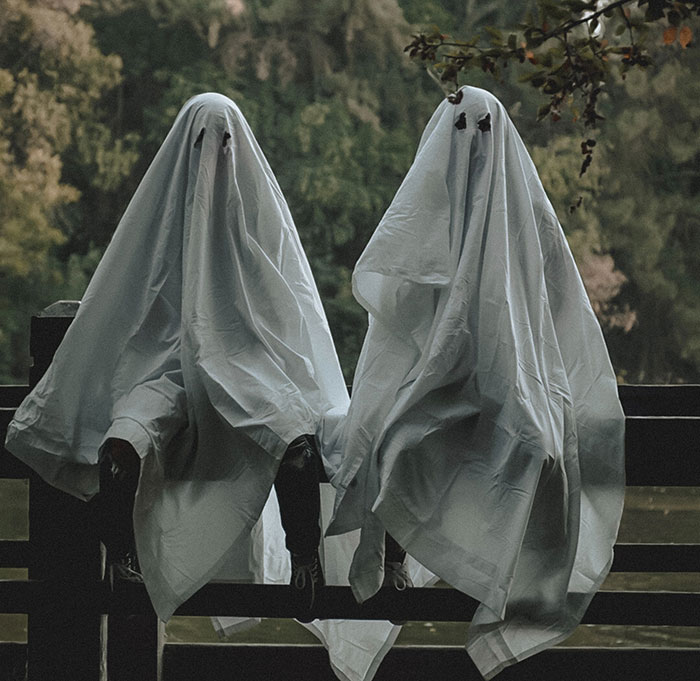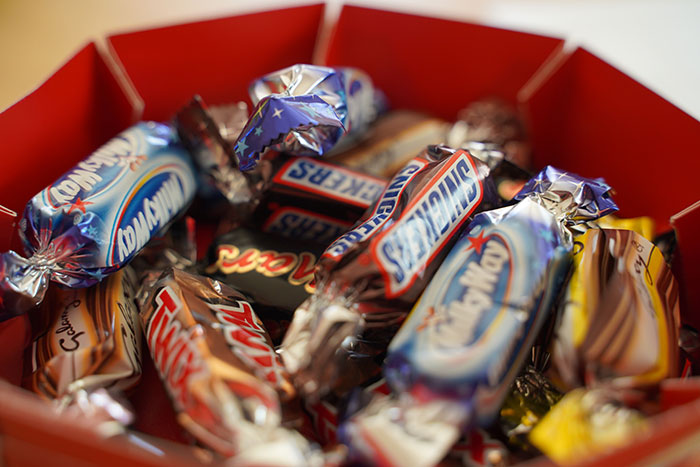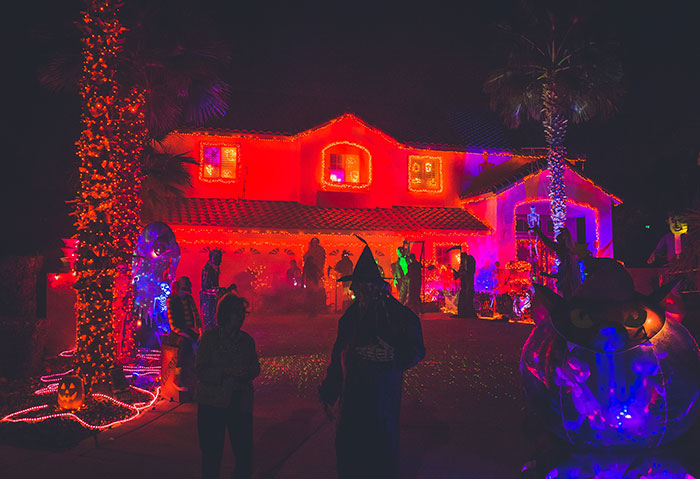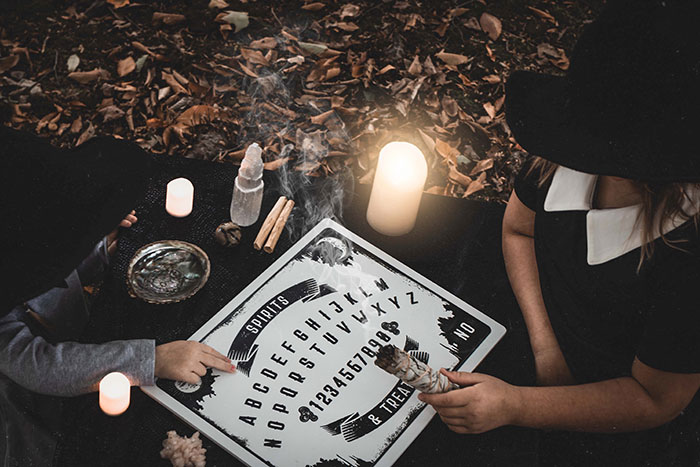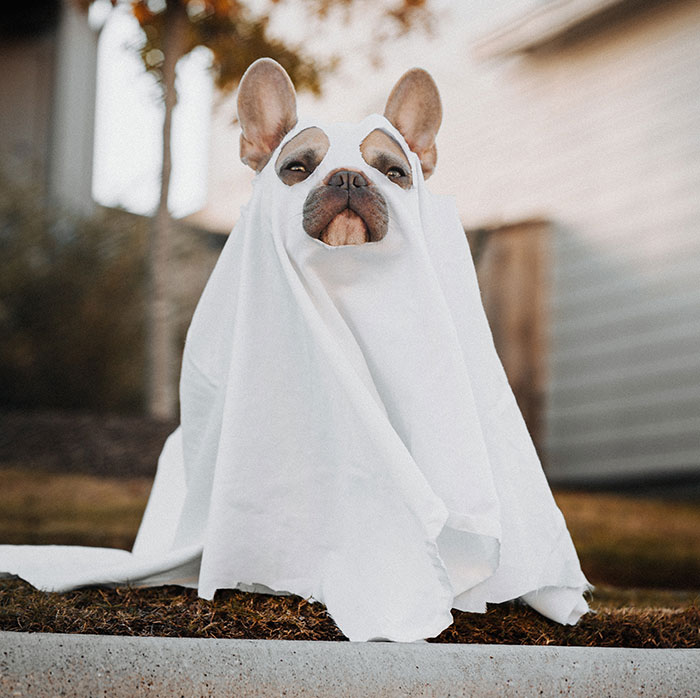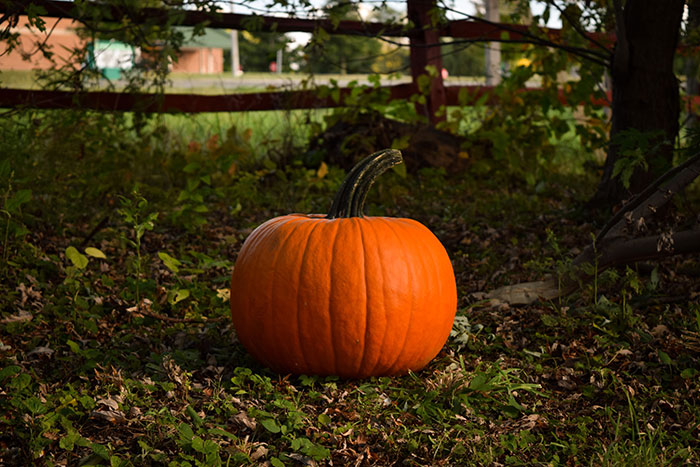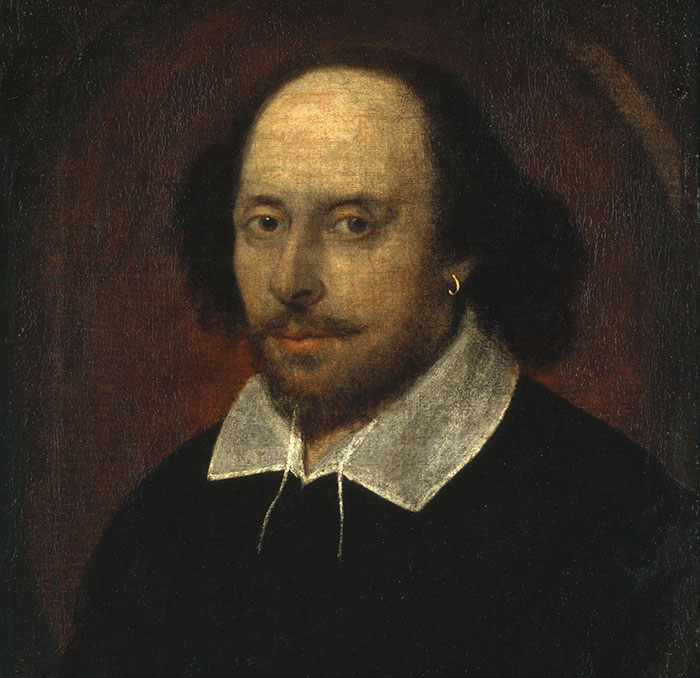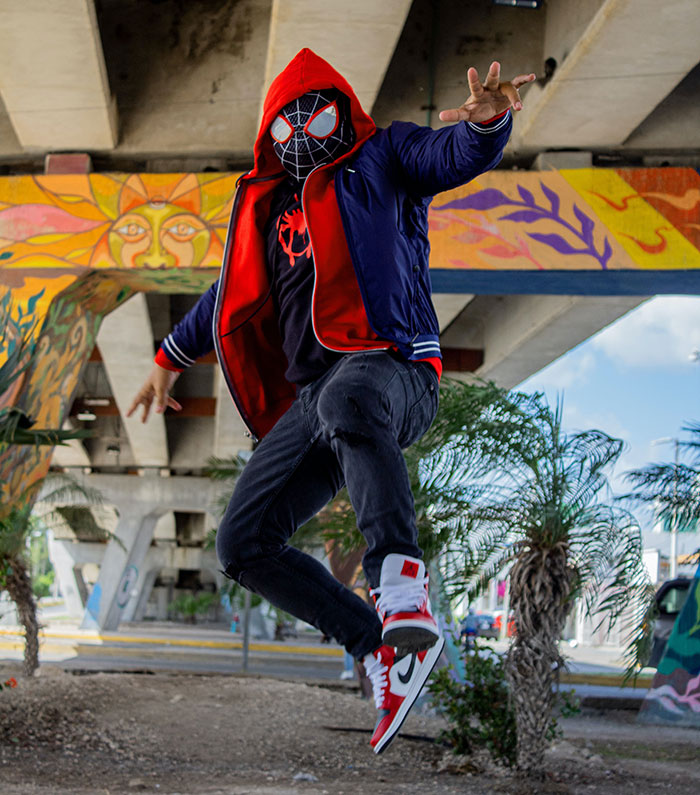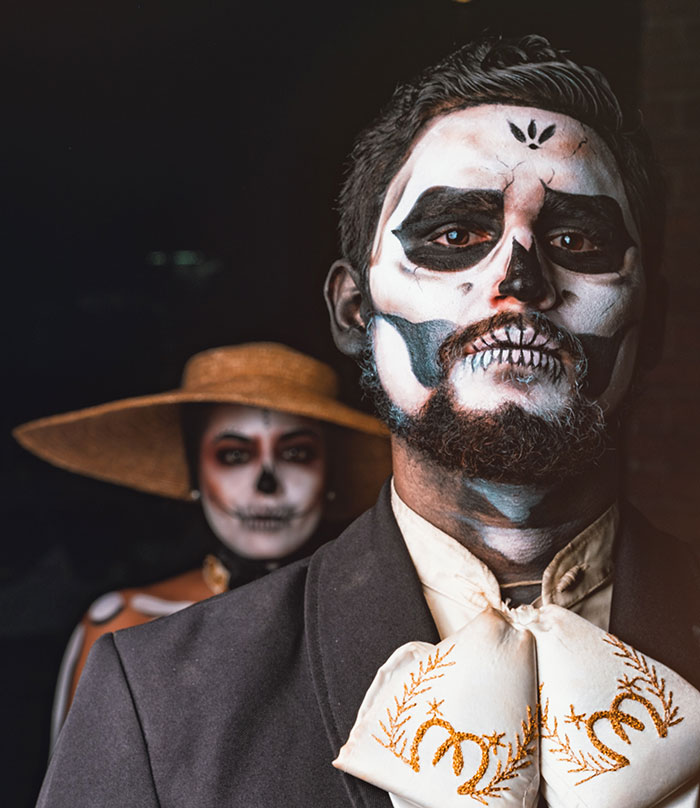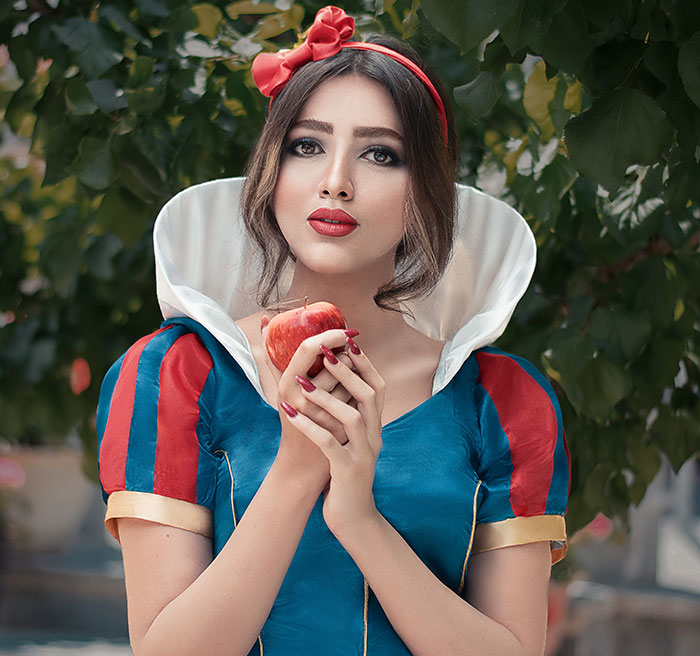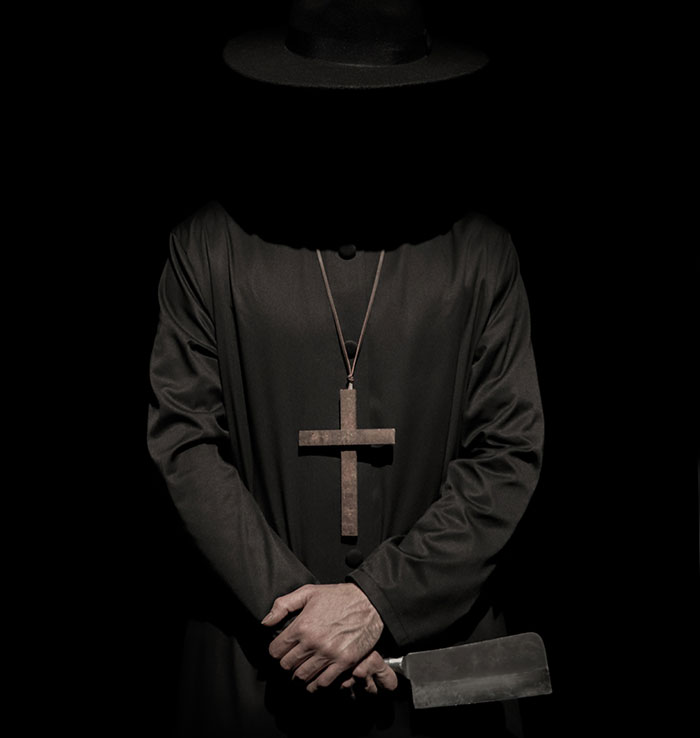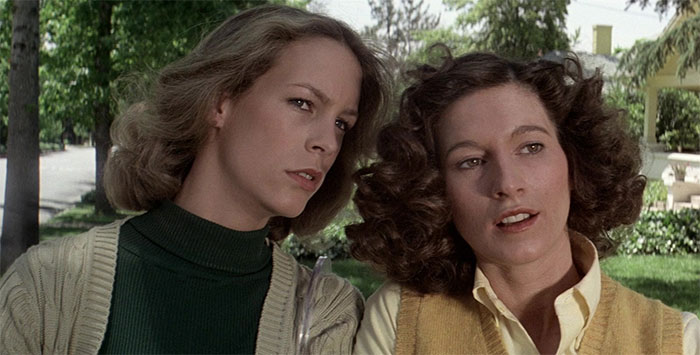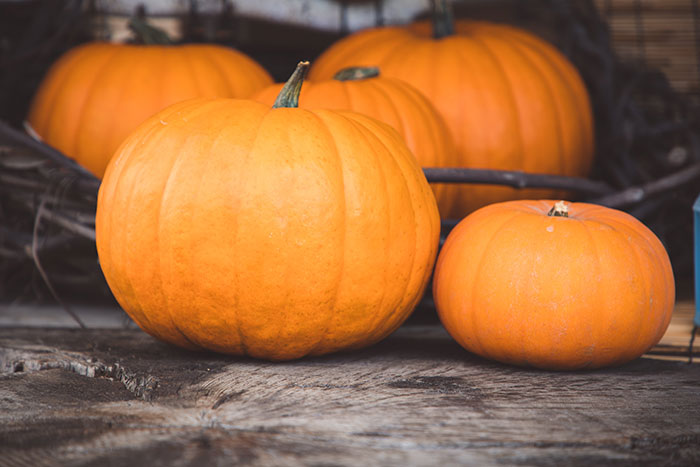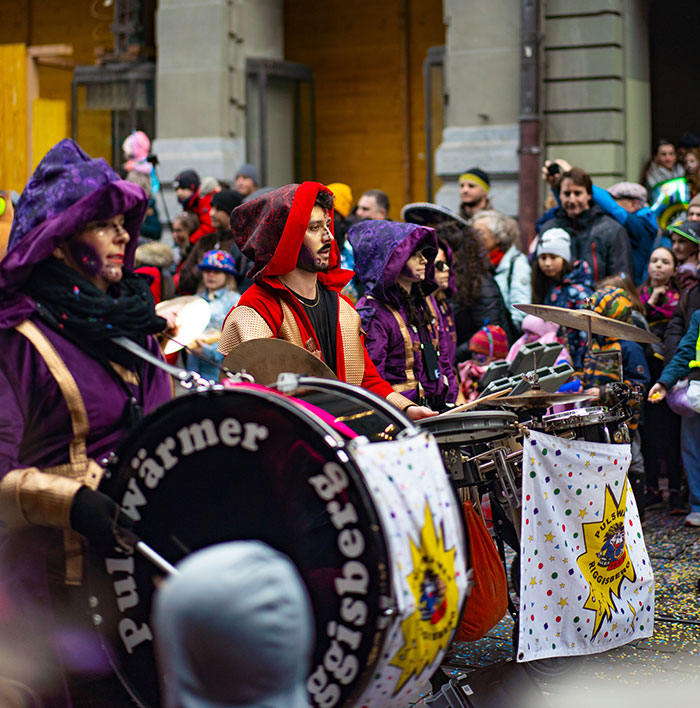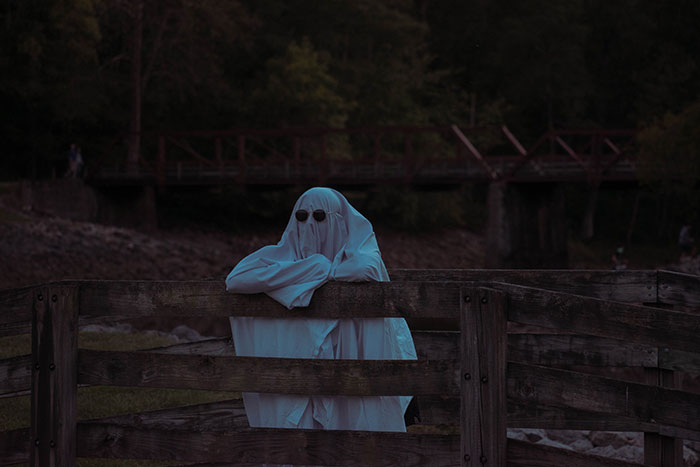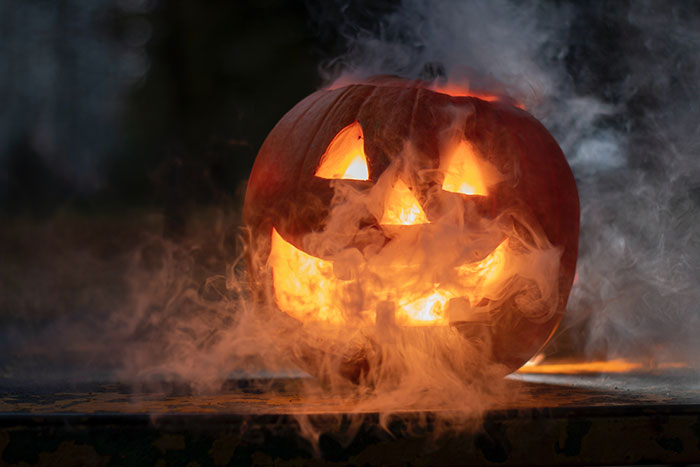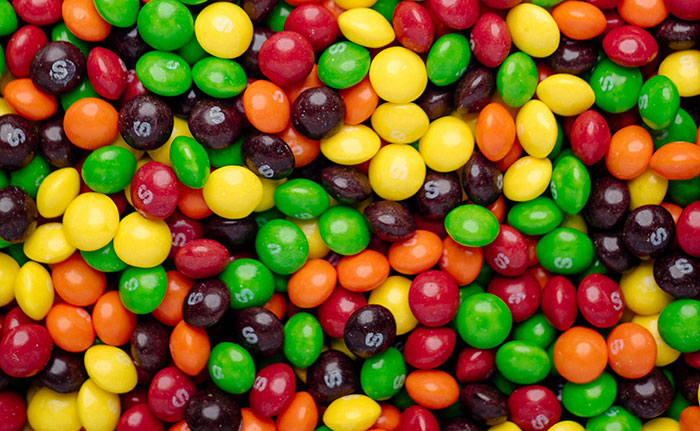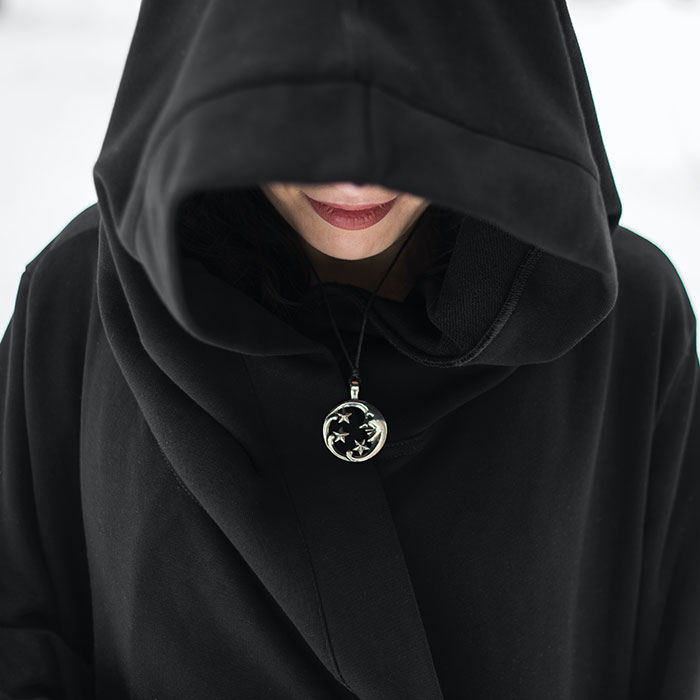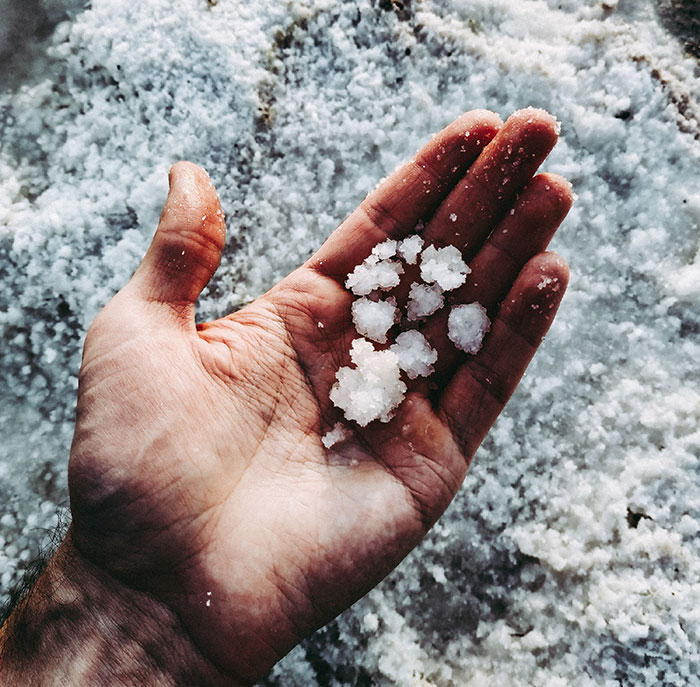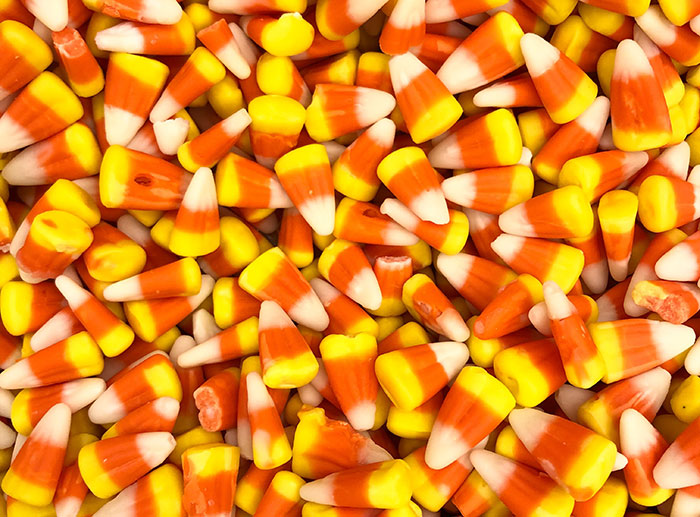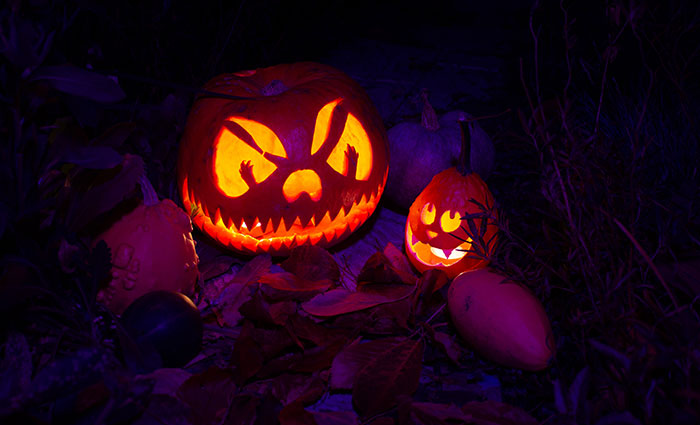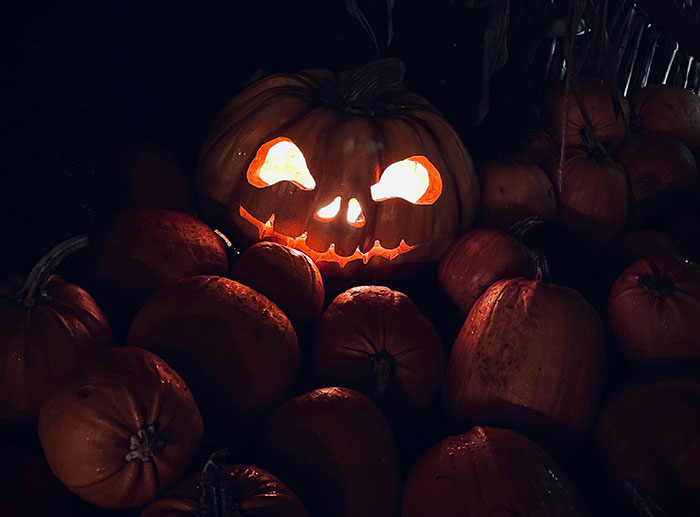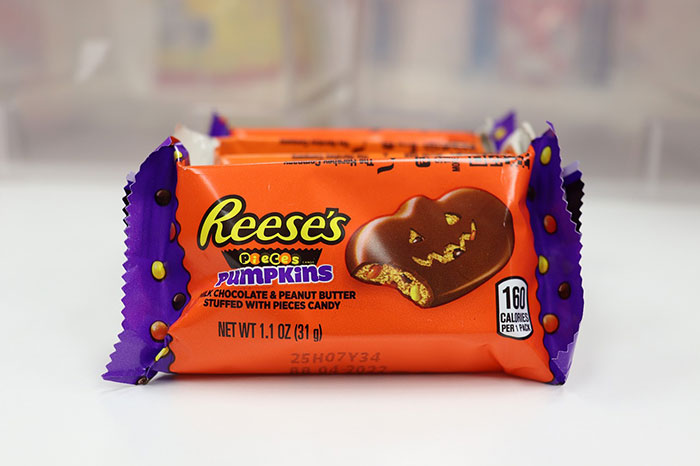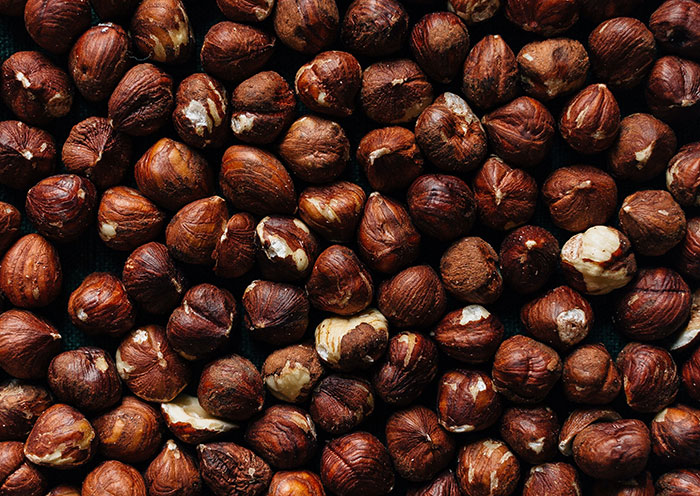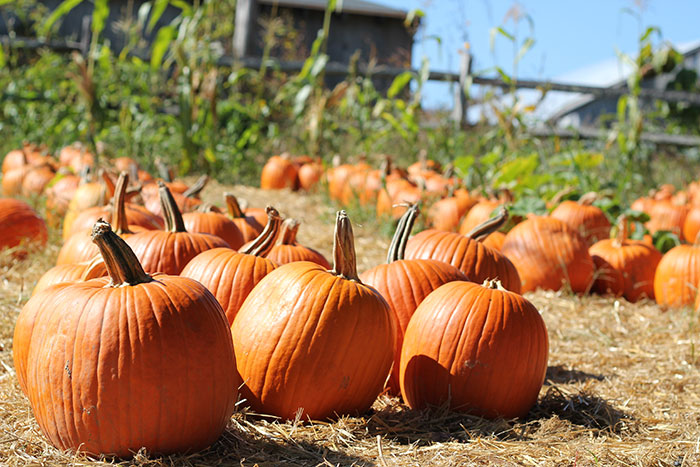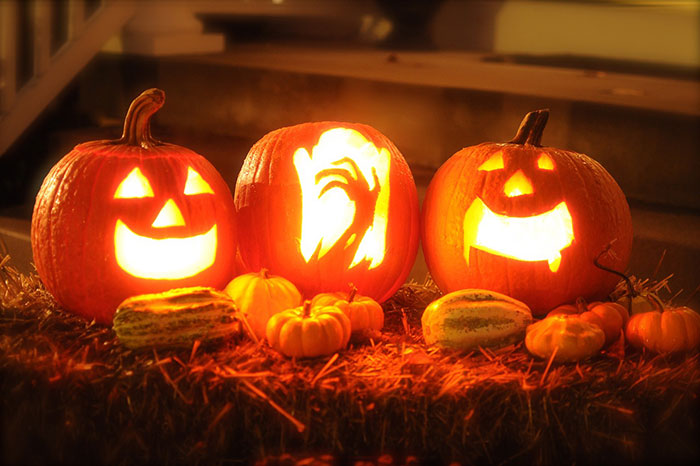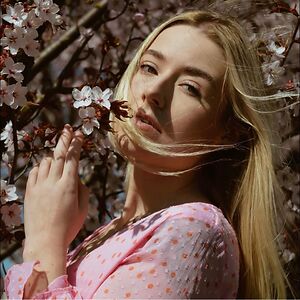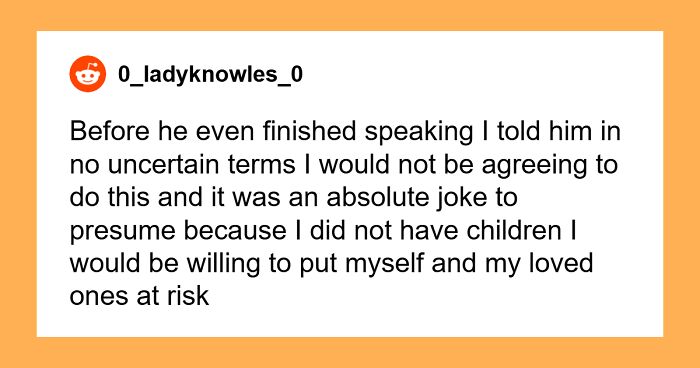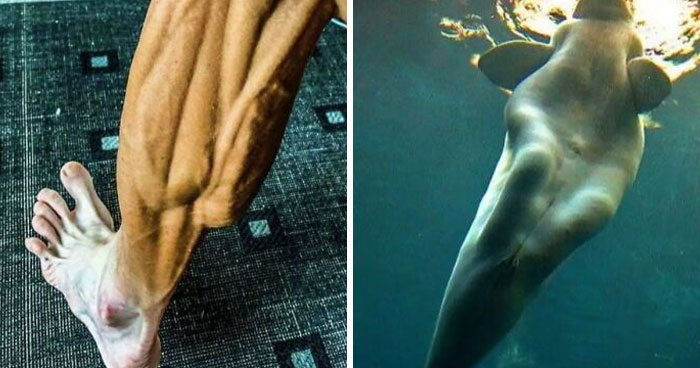There are many things to love about the fall season. Hot apple pies, fuzzy blankets, scented candles, and the many holidays celebrated in fall. One of the most awaited holidays of the year is undoubtedly Halloween, when one gets to bring all their most esoteric, magical, and spooky ideas to life for just one night. Also, it's the only time when taking candy from a stranger becomes socially acceptable.
Yet, one of the most anticipated holidays also harbors many secrets and treats. Plenty of Halloween traditions still widely practiced today, such as carving pumpkins, trick-or-treating, and wearing scary costumes, originated from Halloween's rich and spooky history. Yet, very few know where many Halloween customs stem from, and how.
One of the widely known fun facts about Halloween is that people would dress up and cover their faces with masks to scare off ghosts. Yet, one of the little fun Halloween facts is that Americans spend millions of dollars on their Halloween pet costumes. Bet you didn't know that! While some Halloween facts might be common knowledge, there are plenty of Halloween history facts and Halloween trivia facts that not even the most dedicated Halloweeners are aware of. P.S. Hallo-wieners love dressing up their pets as hot dogs!
Below, we've compiled many facts about Halloween, both historical and trivial, that gals and ghouls will surely find interesting! Do you know of any more interesting facts about Halloween? Let us know! Psst, facts on Halloween are great to utilize in a Halloween trivia game. Happy haunting!
This post may include affiliate links.
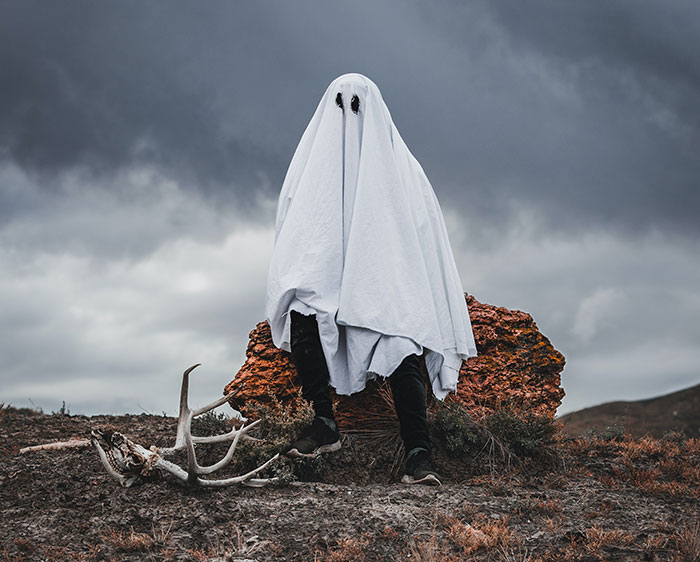 It is believed that if a child is born on Halloween, they will be able to talk to the spirits.
It is believed that if a child is born on Halloween, they will be able to talk to the spirits.
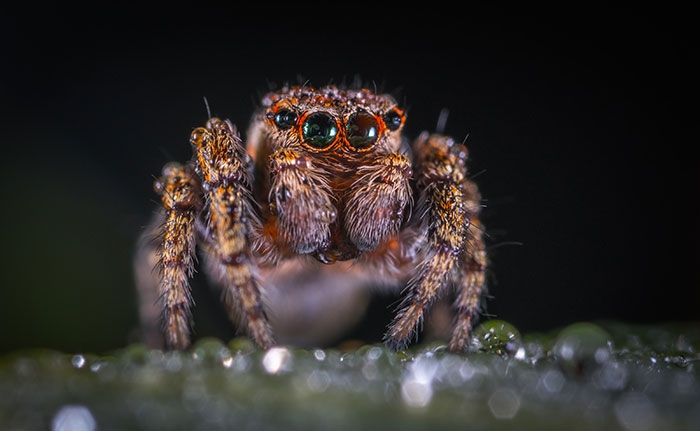 Finding a spider on Halloween night is considered good luck.
Finding a spider on Halloween night is considered good luck.
I have a few around the garage, I can certainly give my luck a push
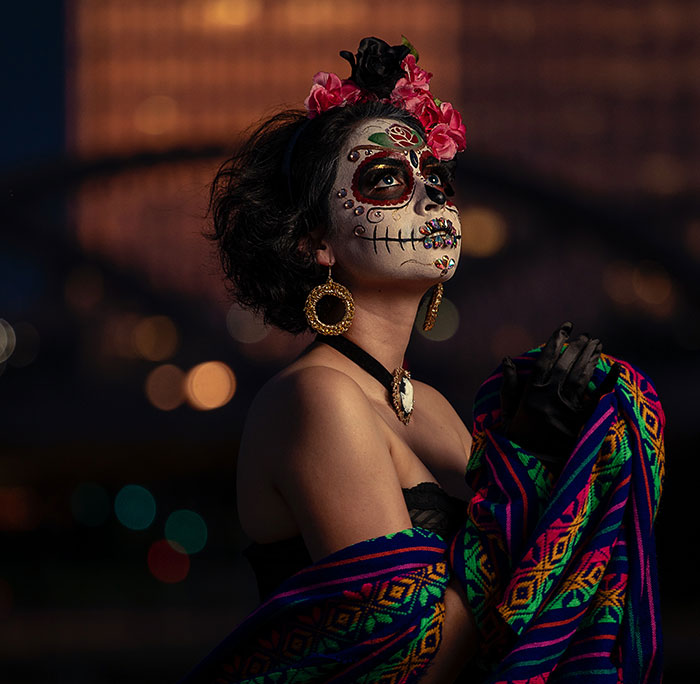 While the Day of the Dead (Día de los Muertos) is often associated with Halloween, it shouldn't be. The Mexican holiday dates back more than 3,000 years and is a time to honor deceased loved ones.
While the Day of the Dead (Día de los Muertos) is often associated with Halloween, it shouldn't be. The Mexican holiday dates back more than 3,000 years and is a time to honor deceased loved ones.
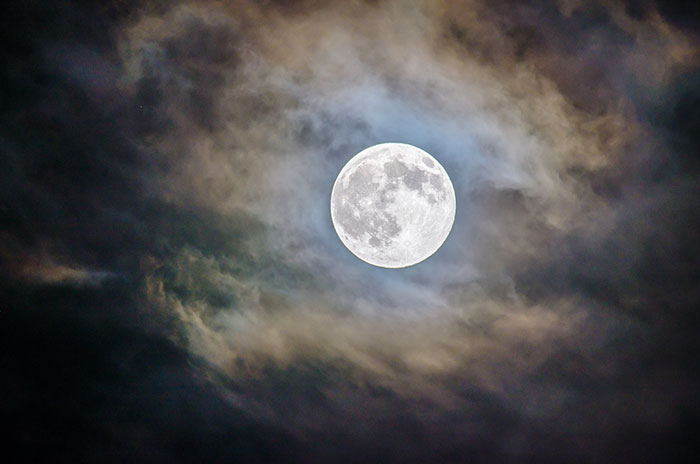 The hour between 3am and 4am is called the ‘witching hour’ or the ‘devil’s hour’. It's a peak of supernatural activity.
The hour between 3am and 4am is called the ‘witching hour’ or the ‘devil’s hour’. It's a peak of supernatural activity.
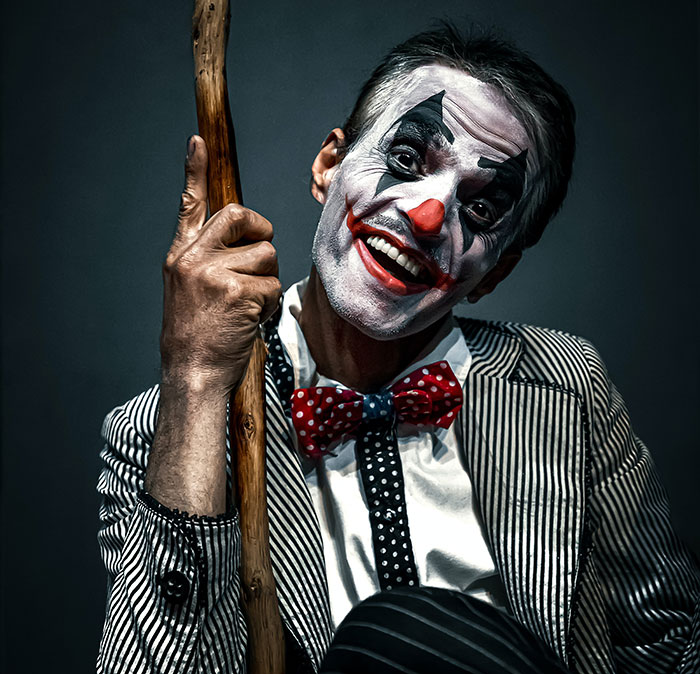 In 2014, France banned people over the age of 13 from wearing clown costumes and makeup on Halloween.
In 2014, France banned people over the age of 13 from wearing clown costumes and makeup on Halloween.
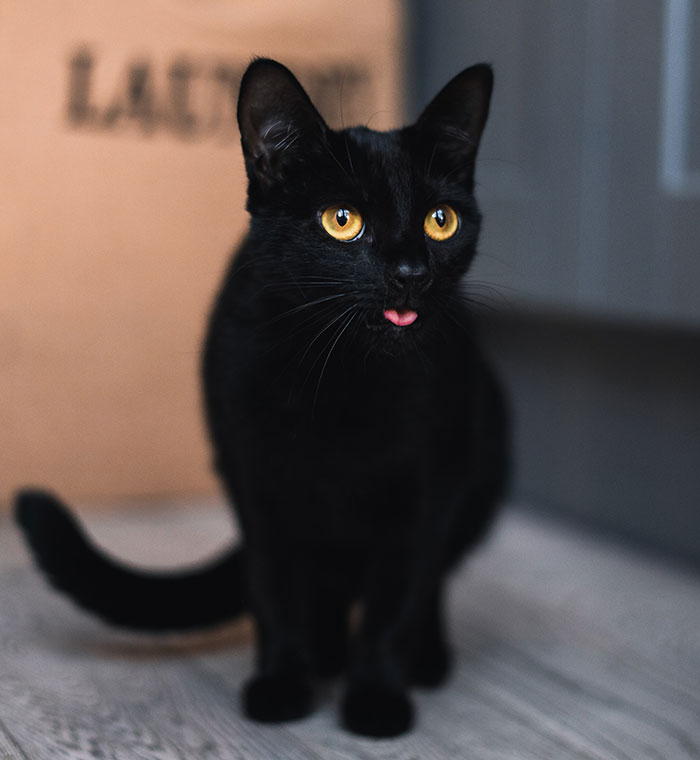 Some animal shelters forbid the adoption of black cats during the Halloween celebration.
Some animal shelters forbid the adoption of black cats during the Halloween celebration.
this happened last year all over the (State/City/Location) where I live, we had to keep our black cat indoors that night just in case
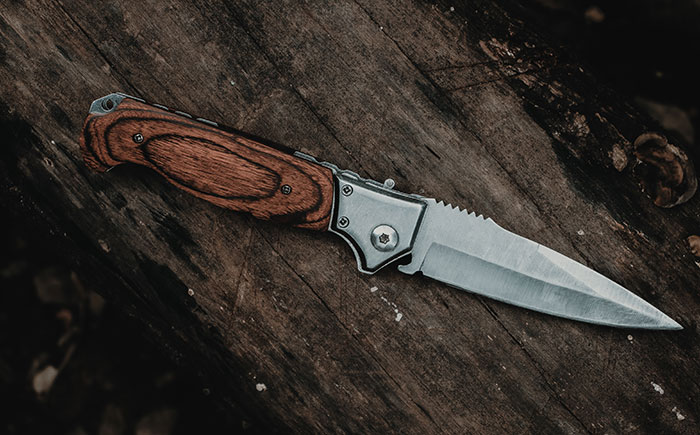 Halloween involves the return of the souls of family and friends. To avoid accidentally hurting invisible ghouls and ghosts, Germans hide all their knives at Halloween.
Halloween involves the return of the souls of family and friends. To avoid accidentally hurting invisible ghouls and ghosts, Germans hide all their knives at Halloween.
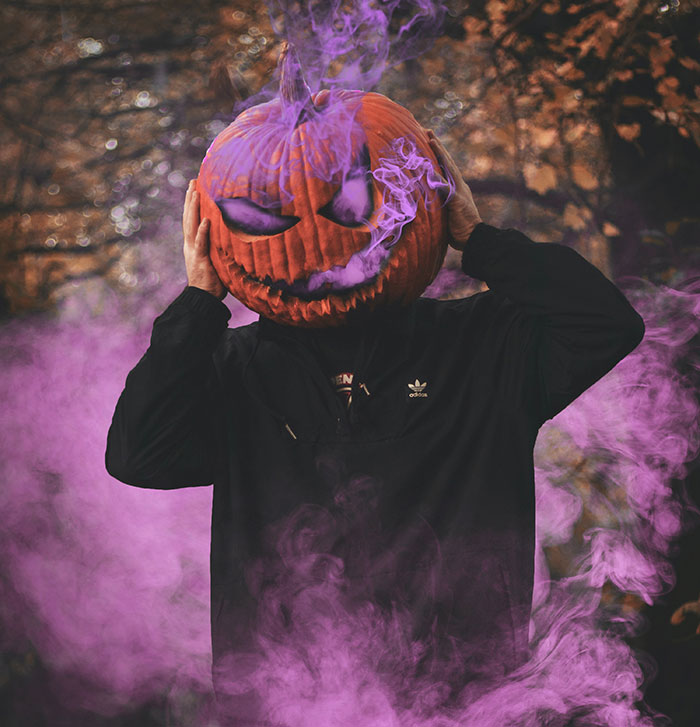 The origins of Halloween costumes came about so that revellers could blend in with the spirits when attending pagan festivals. This was to frighten demons away when they saw that mere mortals were mocking their appearance.
The origins of Halloween costumes came about so that revellers could blend in with the spirits when attending pagan festivals. This was to frighten demons away when they saw that mere mortals were mocking their appearance.
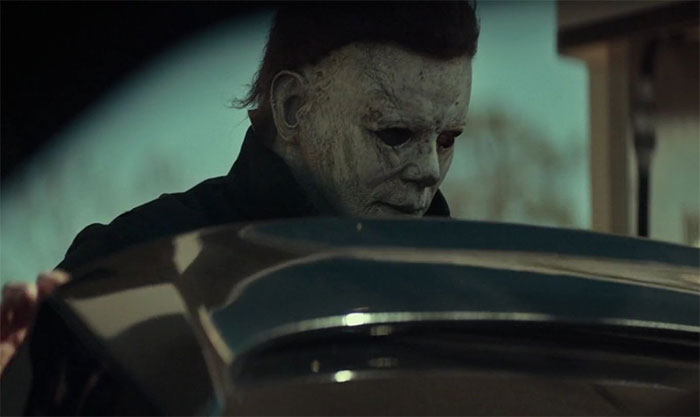 Michael Myers' mask is actually a William Shatner mask.
Michael Myers' mask is actually a William Shatner mask.
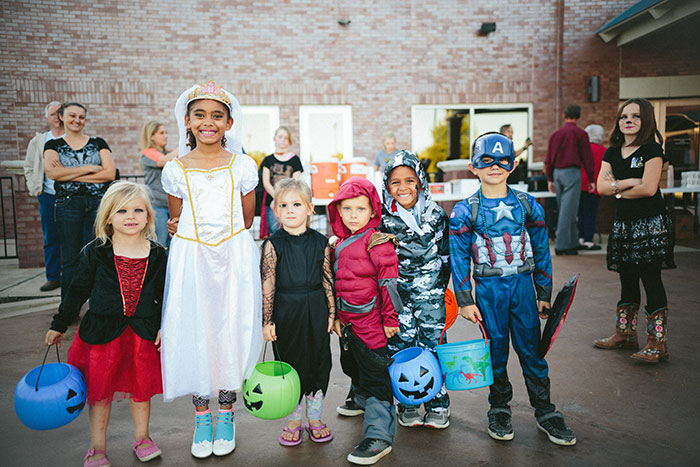 The night before Halloween is referred to as "Mischief Night". Mischief Night is an informal holiday that dates back to the 1700s when a school headmaster urged kids to play tricks on each other.
The night before Halloween is referred to as "Mischief Night". Mischief Night is an informal holiday that dates back to the 1700s when a school headmaster urged kids to play tricks on each other.
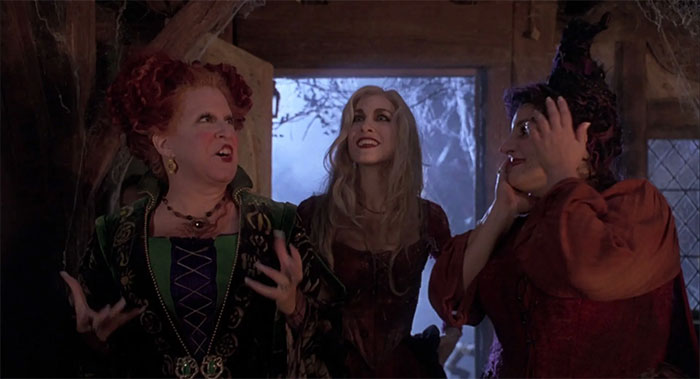 Disney almost made "Hocus Pocus" a completely different movie. The original title, Disney's "Halloween House", had a much darker and scarier script.
Disney almost made "Hocus Pocus" a completely different movie. The original title, Disney's "Halloween House", had a much darker and scarier script.
How is Pocus is awesome then 29 years later we get a disappointment in Hocus Pocus 2.
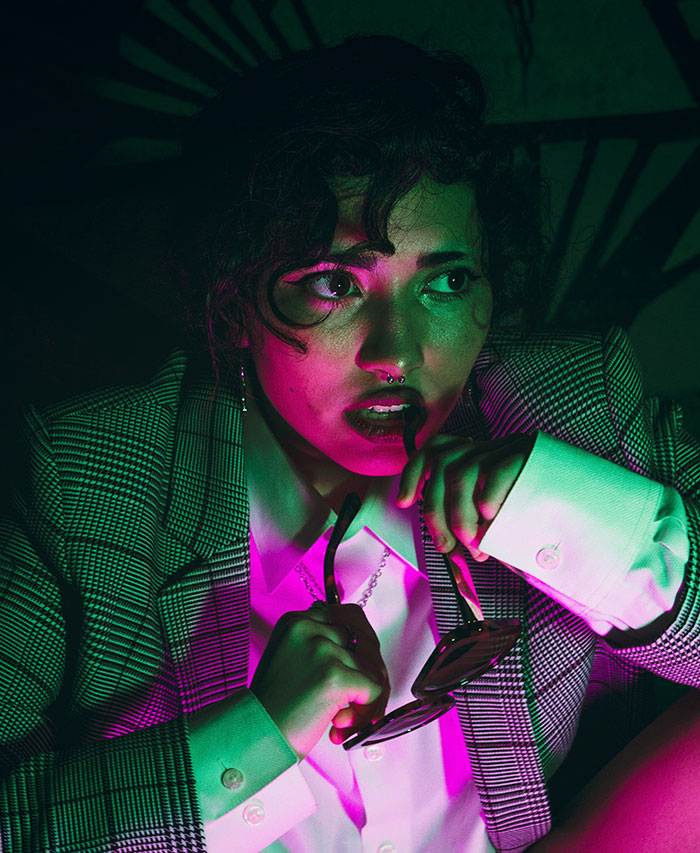 Triskaidekaphobia is what you have if you're afflicted with a crippling fear of the number 13.
Triskaidekaphobia is what you have if you're afflicted with a crippling fear of the number 13.
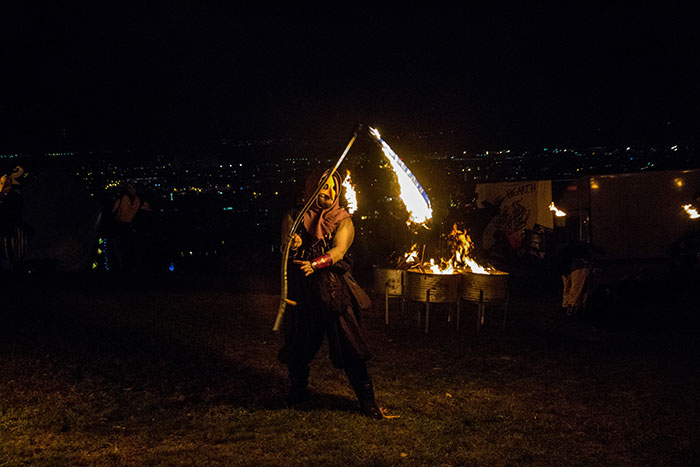 Halloween originated from an ancient Celtic festival called Samhain, when people would light bonfires and wear costumes to ward off ghosts.
Halloween originated from an ancient Celtic festival called Samhain, when people would light bonfires and wear costumes to ward off ghosts.
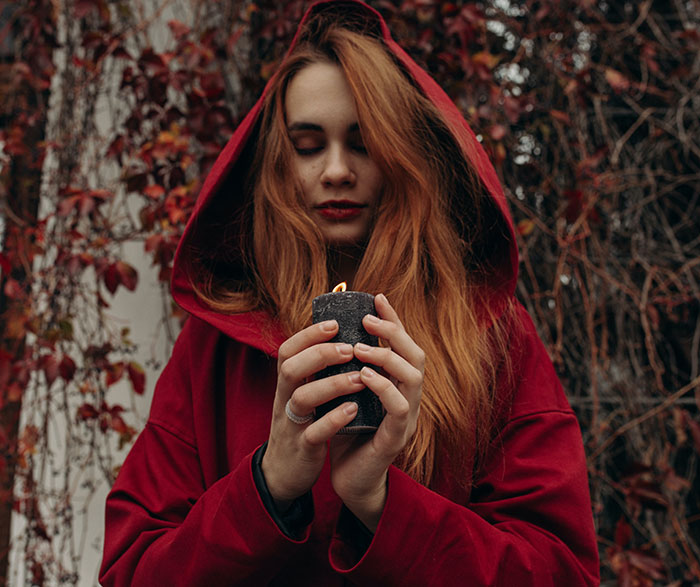 The word witch comes from the Old English word ‘Wicce’: "Female magician, sorceress," in later use, especially "A woman supposed to have dealings with the evil spirits and to be able to perform supernatural acts."
The word witch comes from the Old English word ‘Wicce’: "Female magician, sorceress," in later use, especially "A woman supposed to have dealings with the evil spirits and to be able to perform supernatural acts."
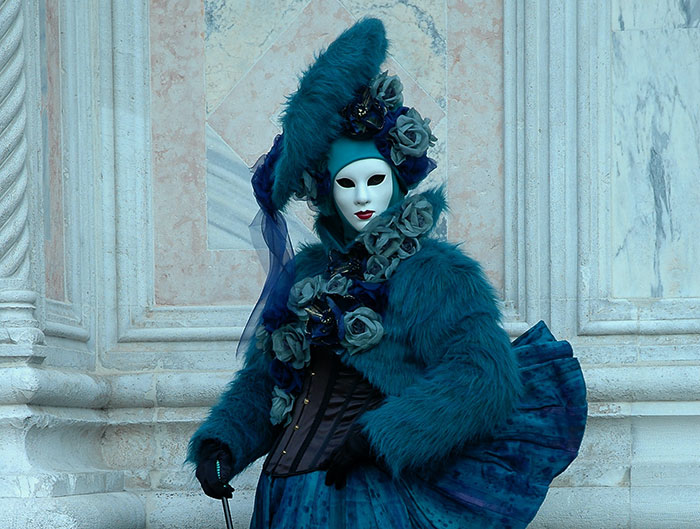 In Dublin, Georgia, any type of costume that covers the face is illegal. It's intended to protect residents from antisocial behavior.
In Dublin, Georgia, any type of costume that covers the face is illegal. It's intended to protect residents from antisocial behavior.
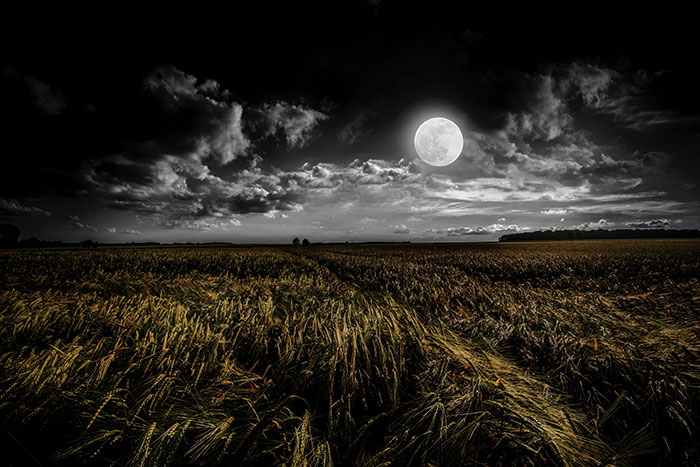 A full moon on Halloween night is considered rare. It only appears once every 19 years in a phenomenon called the Metonic cycle.
A full moon on Halloween night is considered rare. It only appears once every 19 years in a phenomenon called the Metonic cycle.
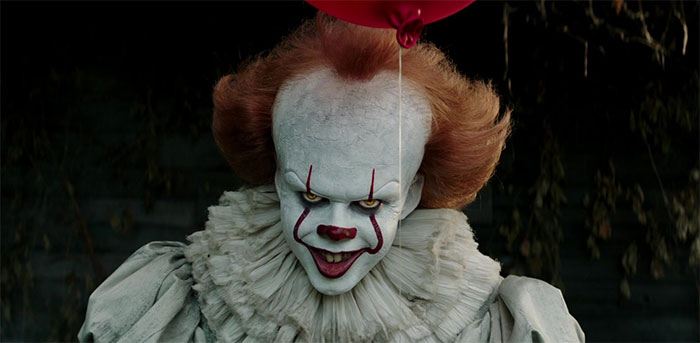 "It" is the most commercially successful horror film of all time.
"It" is the most commercially successful horror film of all time.
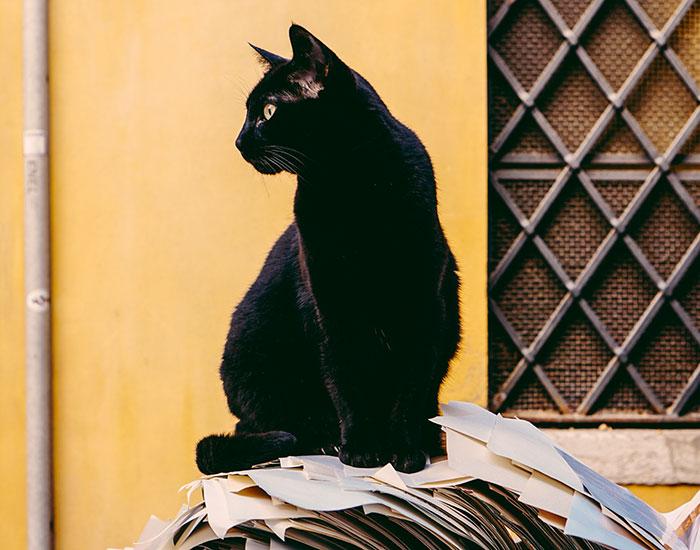 Black cats are undeservedly associated with bad luck. Their reputation dates way back to the Middle Ages when people considered them a sign of the devil. Black cats became the object of fear and scorn after being linked to witches and black magic.
Black cats are undeservedly associated with bad luck. Their reputation dates way back to the Middle Ages when people considered them a sign of the devil. Black cats became the object of fear and scorn after being linked to witches and black magic.
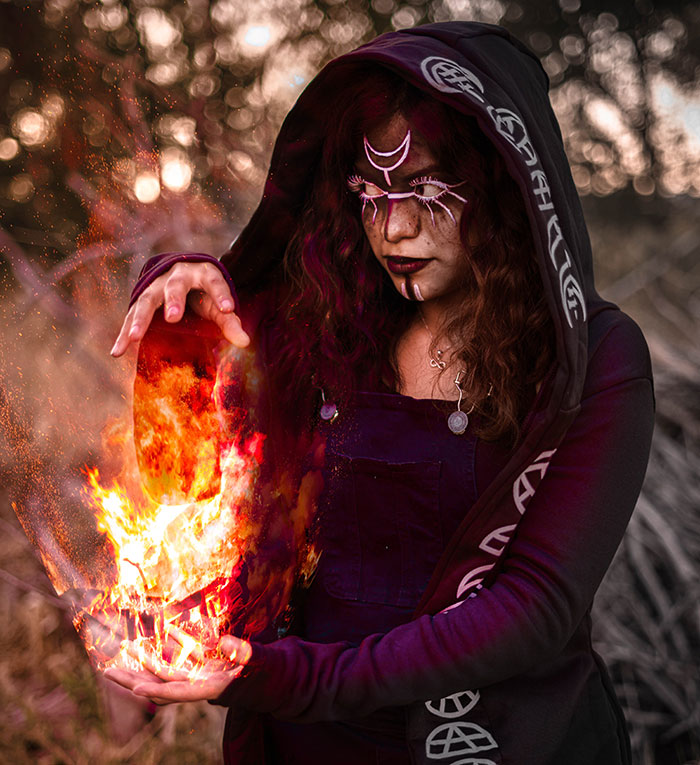 Witches used to be honoured and were known as ‘the crone’ amongst the Celts until fear of older women, particularly those who didn’t marry, spread and the kindly figure of the crone morphed in the popular mind into a cackling evil witch.
Witches used to be honoured and were known as ‘the crone’ amongst the Celts until fear of older women, particularly those who didn’t marry, spread and the kindly figure of the crone morphed in the popular mind into a cackling evil witch.
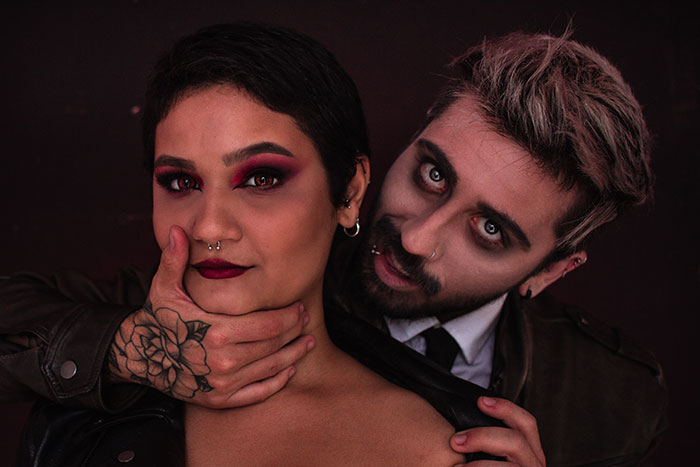 The name Dracula means ‘Son of the Dragon’ and was taken from a bloodthirsty 16th-century conqueror called Vlad Dracula.
The name Dracula means ‘Son of the Dragon’ and was taken from a bloodthirsty 16th-century conqueror called Vlad Dracula.
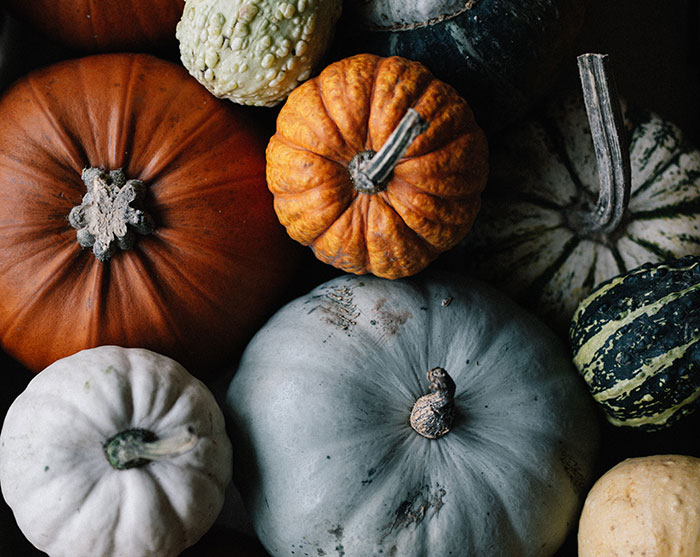 A pumpkin is just a type of squash that grows orange in time for Halloween. But they aren’t only orange, they also come in white, blue, green, purple and even black.
A pumpkin is just a type of squash that grows orange in time for Halloween. But they aren’t only orange, they also come in white, blue, green, purple and even black.
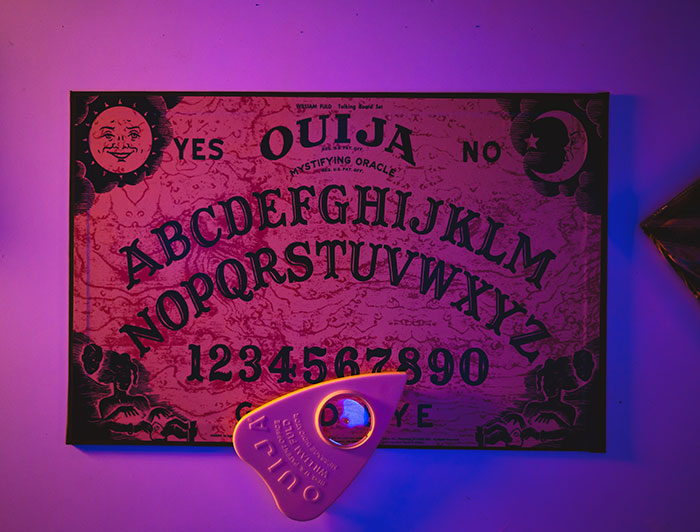 A Ouija board’s name is derived from a combination of the French and German words for ‘yes’.
A Ouija board’s name is derived from a combination of the French and German words for ‘yes’.
I just realized that as someone who is familiar with French and is comfortable with German.
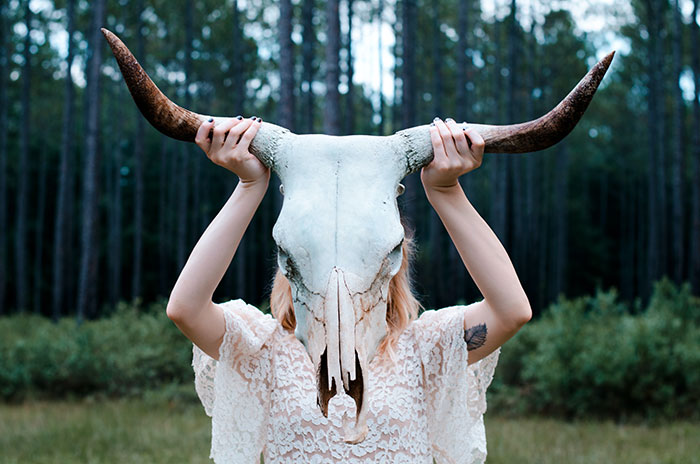 The original Halloween masks may have been actual skulls. Also, Celtic peoples wore animal skins and heads, drag getups and mechanical horse heads.
The original Halloween masks may have been actual skulls. Also, Celtic peoples wore animal skins and heads, drag getups and mechanical horse heads.
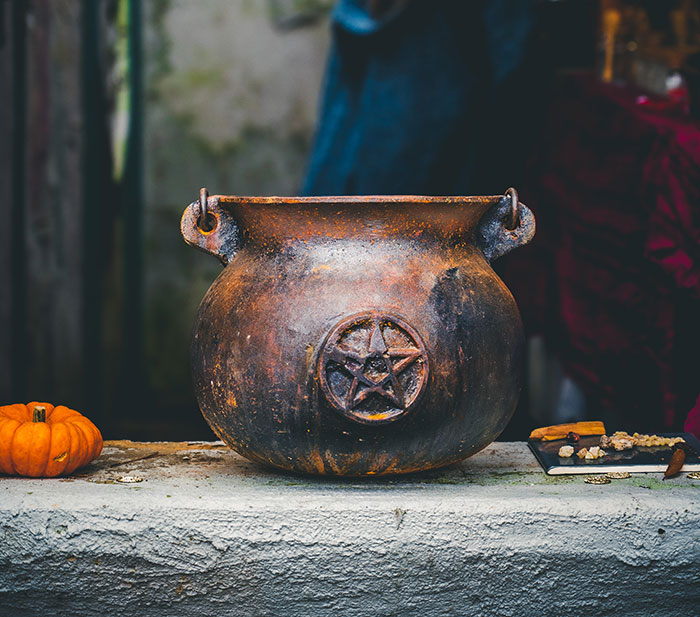 The pagan Celts believed that after death, all souls went into the crone's cauldron, which symbolized the Earth mother's womb. There, the souls awaited reincarnation, as the goddess' stirring allowed for new souls to enter the cauldron and old souls to be reborn.
The pagan Celts believed that after death, all souls went into the crone's cauldron, which symbolized the Earth mother's womb. There, the souls awaited reincarnation, as the goddess' stirring allowed for new souls to enter the cauldron and old souls to be reborn.
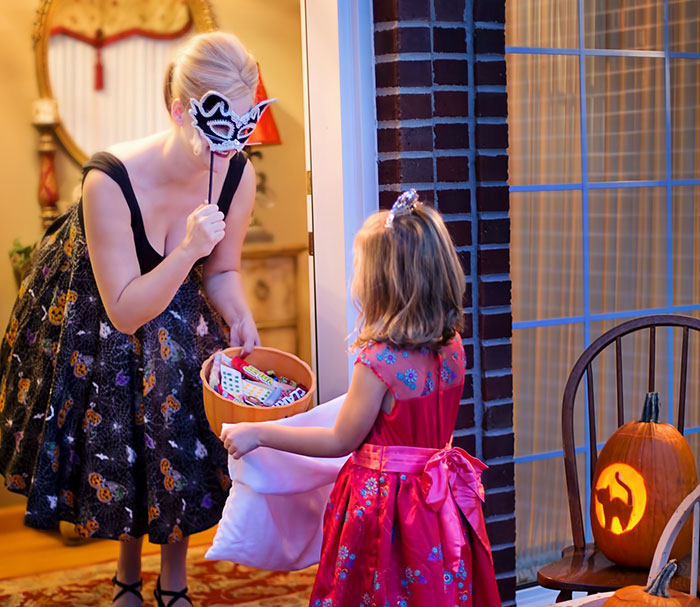 On average, kids who trick or treat will bring home a bag of candies worth 11,000 calories.
On average, kids who trick or treat will bring home a bag of candies worth 11,000 calories.
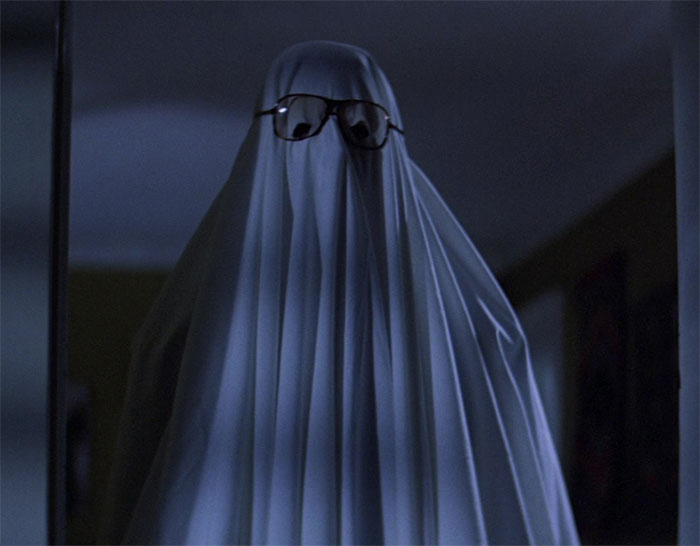 The first "Halloween" movie was also filmed within 21 days.
The first "Halloween" movie was also filmed within 21 days.
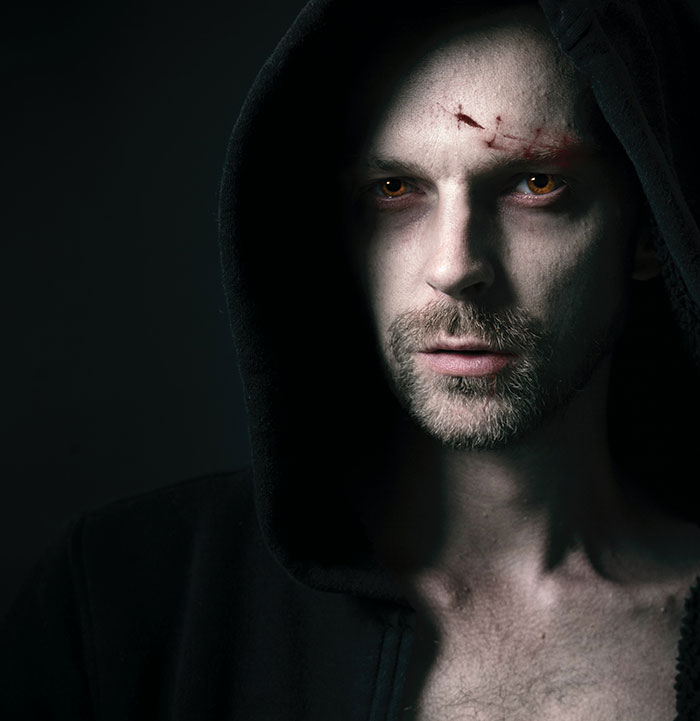 Originally, the famous vampire Count Dracula was named Count Wampyr in Bram Stoker’s novel.
Originally, the famous vampire Count Dracula was named Count Wampyr in Bram Stoker’s novel.
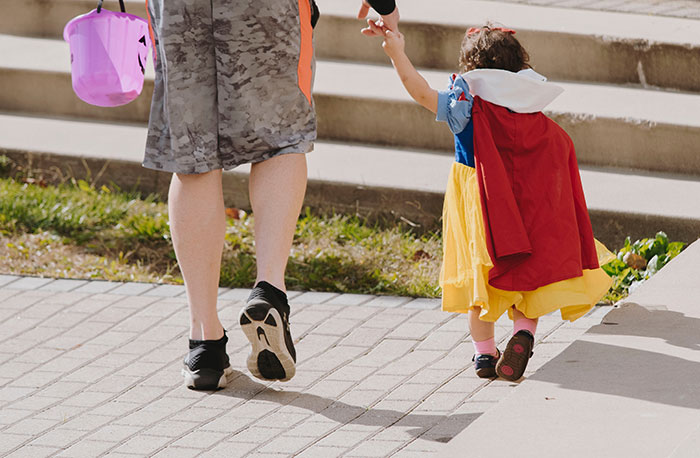 If you are over the age of 13 in Bellville, Missouri, you cannot ask for Halloween candy, enforcing the opinion that trick-or-treating is for children only.
If you are over the age of 13 in Bellville, Missouri, you cannot ask for Halloween candy, enforcing the opinion that trick-or-treating is for children only.
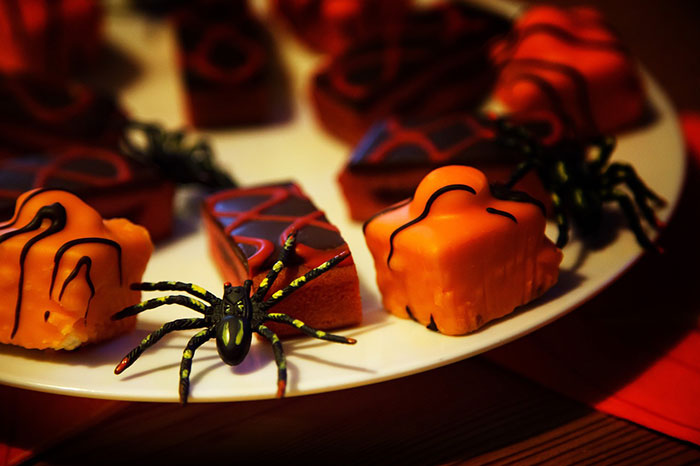 Pumpkin-themed foods are popularly eaten during Halloween.
Pumpkin-themed foods are popularly eaten during Halloween.
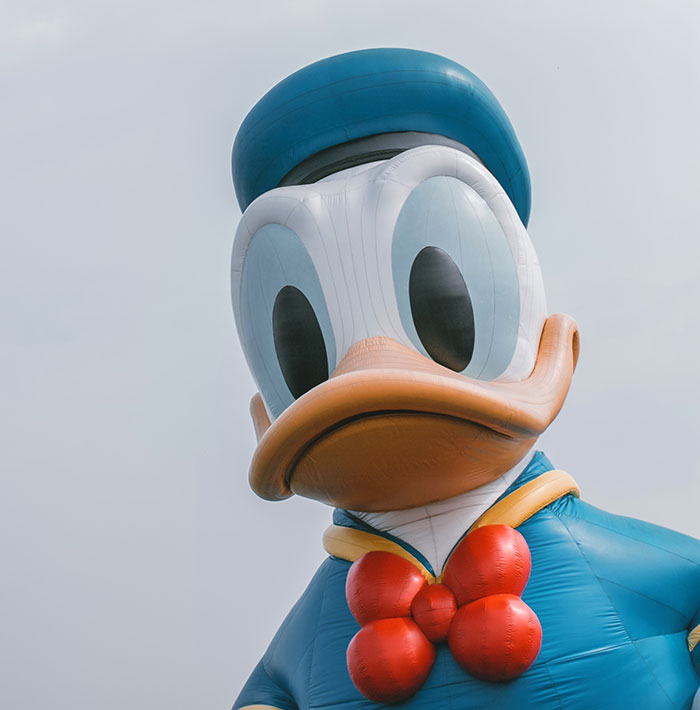 The commercialization of Halloween began after WW2 when sugar rationing came to an end in 1947. Several candy companies began advertising campaigns and the concept of Halloween with help from popular characters such as the Peanuts crew and Disney’s Donald Duck.
The commercialization of Halloween began after WW2 when sugar rationing came to an end in 1947. Several candy companies began advertising campaigns and the concept of Halloween with help from popular characters such as the Peanuts crew and Disney’s Donald Duck.
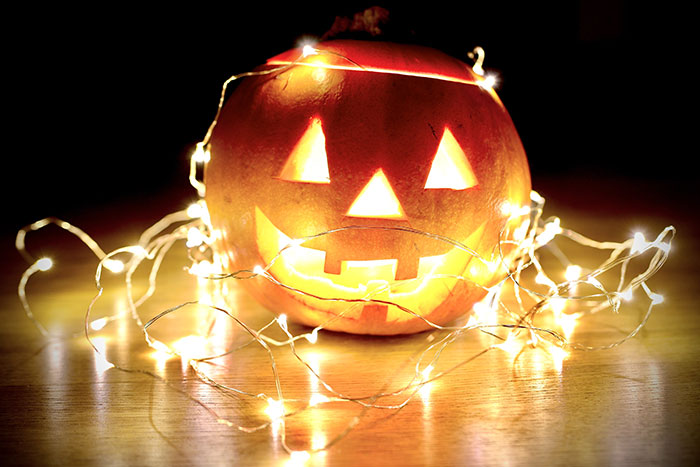 There's a reason why black and orange are associated with Halloween. Orange signals the harvest of autumn, while black is a symbol of darkness and acts as a reminder that Halloween once was a festival that marked the boundaries between life and death.
There's a reason why black and orange are associated with Halloween. Orange signals the harvest of autumn, while black is a symbol of darkness and acts as a reminder that Halloween once was a festival that marked the boundaries between life and death.
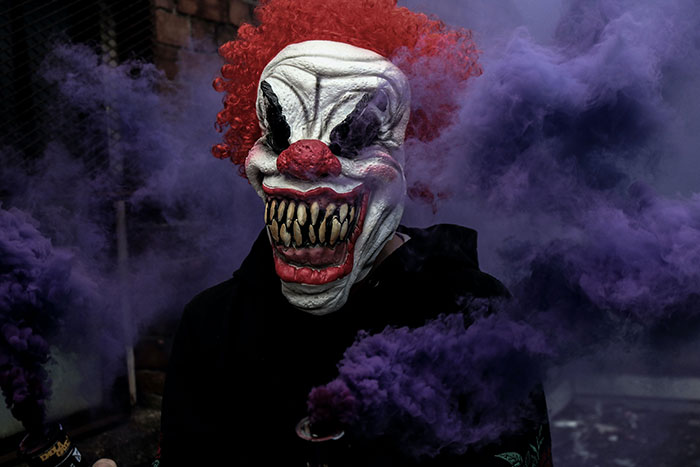 Before costumes and trick-or-treating, Halloween was a night for pranking. The pranks eventually got out of control and in 1933, vandals caused millions of dollars of damage across the U.S., leading many people to refer to it as “Black Halloween.”
Before costumes and trick-or-treating, Halloween was a night for pranking. The pranks eventually got out of control and in 1933, vandals caused millions of dollars of damage across the U.S., leading many people to refer to it as “Black Halloween.”
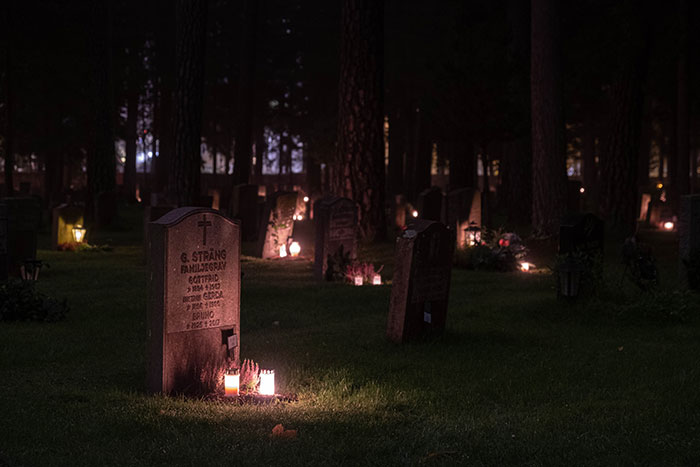 All Saints Day is not All Souls Day. Celebrated on November 1, All Saints Day honors the death of Catholic saints and loved ones. All Souls Day, on November 2, is observed to pray for souls of the faithfully departed that remain trapped in purgatory in hopes they'll be admitted to heaven.
All Saints Day is not All Souls Day. Celebrated on November 1, All Saints Day honors the death of Catholic saints and loved ones. All Souls Day, on November 2, is observed to pray for souls of the faithfully departed that remain trapped in purgatory in hopes they'll be admitted to heaven.
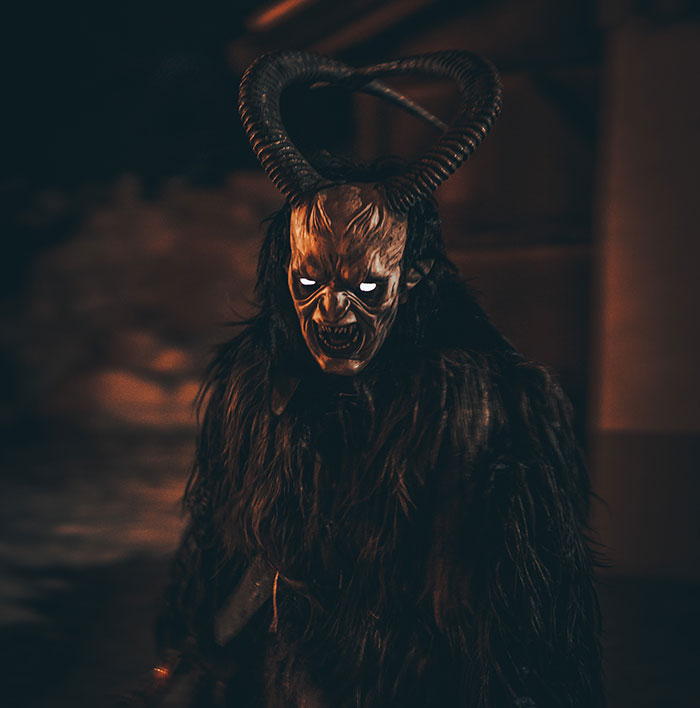 When All Hallows’ Eve was co-opted by Christians, the new tradition became to dress up as the devil in the belief that Satan would flee when he saw people mocking him and attacking his pride.
When All Hallows’ Eve was co-opted by Christians, the new tradition became to dress up as the devil in the belief that Satan would flee when he saw people mocking him and attacking his pride.
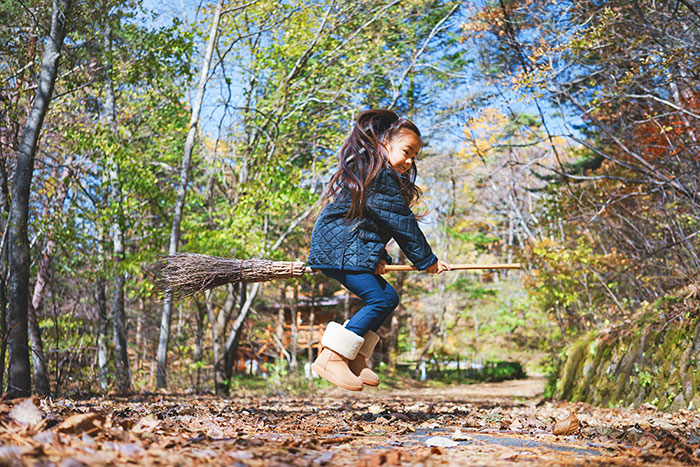 The witch's broomstick is another superstition that has its roots in medieval myths. The elderly, introverted women that were accused of witchcraft were often poor and could not afford horses, so they navigated through the woods on foot with the help of walking sticks, which were sometimes substituted by brooms.
The witch's broomstick is another superstition that has its roots in medieval myths. The elderly, introverted women that were accused of witchcraft were often poor and could not afford horses, so they navigated through the woods on foot with the help of walking sticks, which were sometimes substituted by brooms.
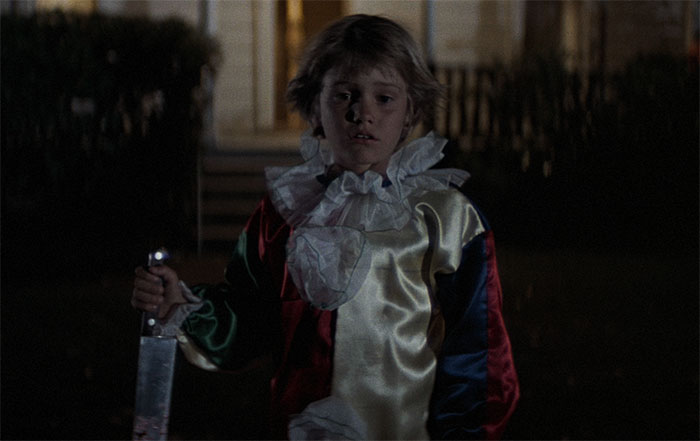 In the film "Halloween", the knife sound effects are made by plunging a knife into a watermelon.
In the film "Halloween", the knife sound effects are made by plunging a knife into a watermelon.
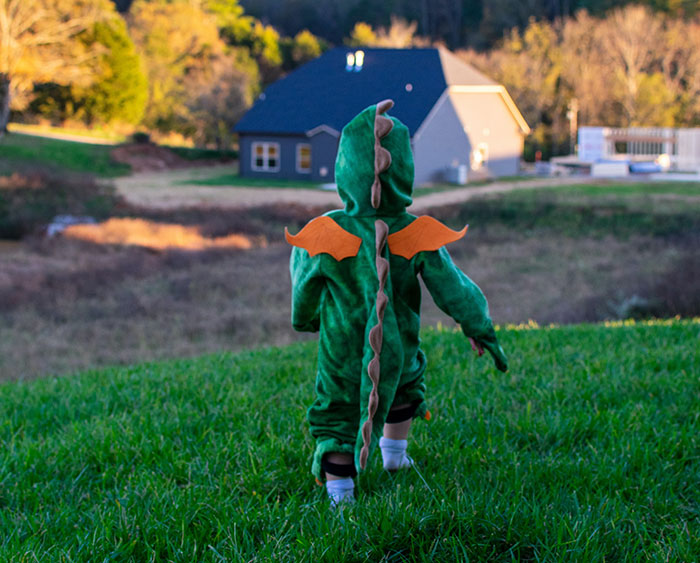 According to statistics, children are most likely to get into an accident on Halloween night.
According to statistics, children are most likely to get into an accident on Halloween night.
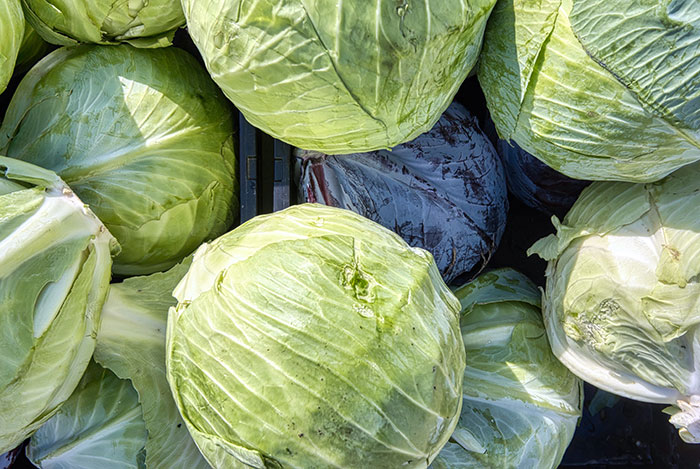 In some American cities, Halloween was originally referred to as Cabbage Night, because some towns used to pile up all the leftover cabbage from the fields and light a bonfire on the night before Halloween.
In some American cities, Halloween was originally referred to as Cabbage Night, because some towns used to pile up all the leftover cabbage from the fields and light a bonfire on the night before Halloween.
Wow that is wasteful. I am sure there people.in the town who would have appreciated getting that cabbage so they wouldn't go hungry.
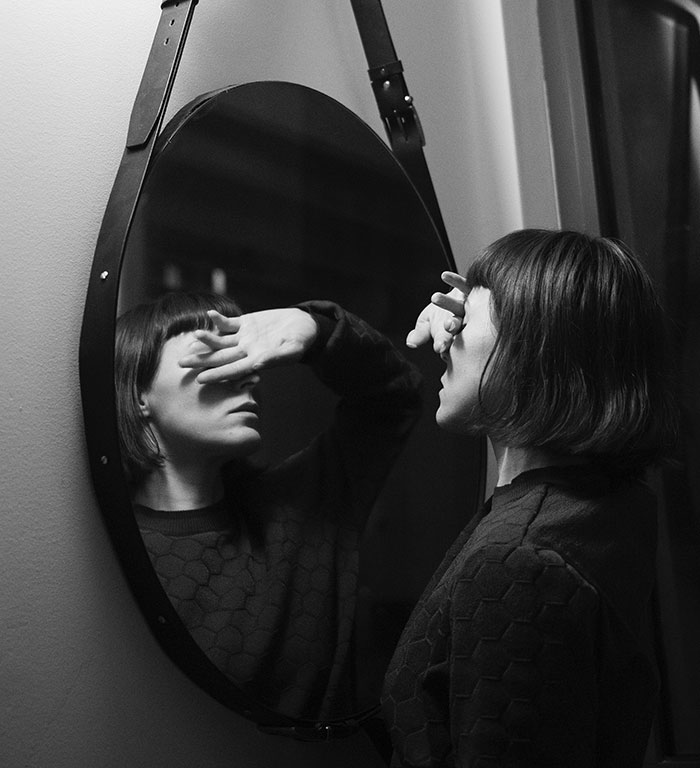 During the 1800s, women would spend a large amount of time staring into a mirror in a darkened room during Halloween. After some time, the woman would be able to see the face of her future husband in the mirror.
During the 1800s, women would spend a large amount of time staring into a mirror in a darkened room during Halloween. After some time, the woman would be able to see the face of her future husband in the mirror.
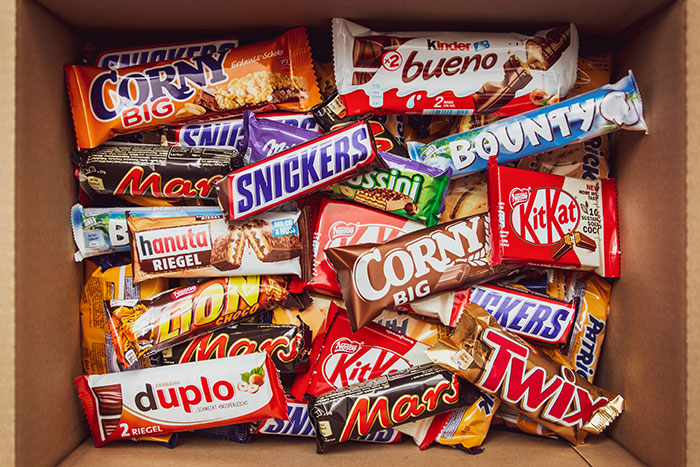 Trick-or-treating was also inspired by a tradition called "mumming." In the middle ages, people dressed up as ghosts and demons, and went door-to-door performing songs and scenes from plays in exchange for food and drink.
Trick-or-treating was also inspired by a tradition called "mumming." In the middle ages, people dressed up as ghosts and demons, and went door-to-door performing songs and scenes from plays in exchange for food and drink.
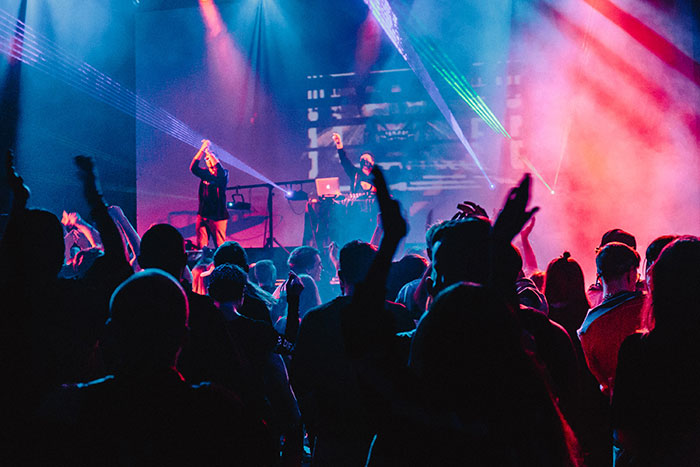 The first official Halloween party guide, titled "Halloween: How to Celebrate It," was published in 1897.
The first official Halloween party guide, titled "Halloween: How to Celebrate It," was published in 1897.
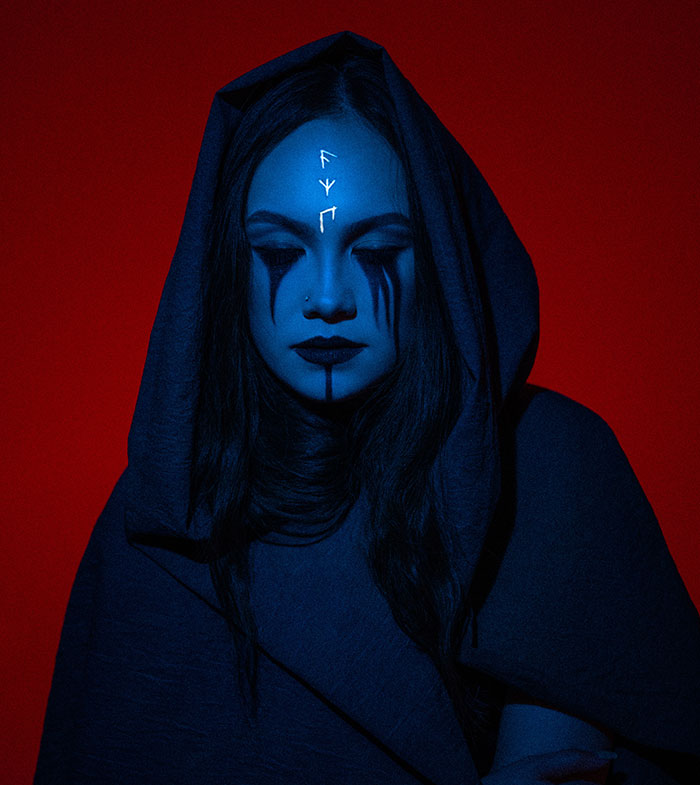 The last legal witch hangings in England took place in Bideford, Devon and the last in Scotland took place in Dornoch, Sutherland.
The last legal witch hangings in England took place in Bideford, Devon and the last in Scotland took place in Dornoch, Sutherland.
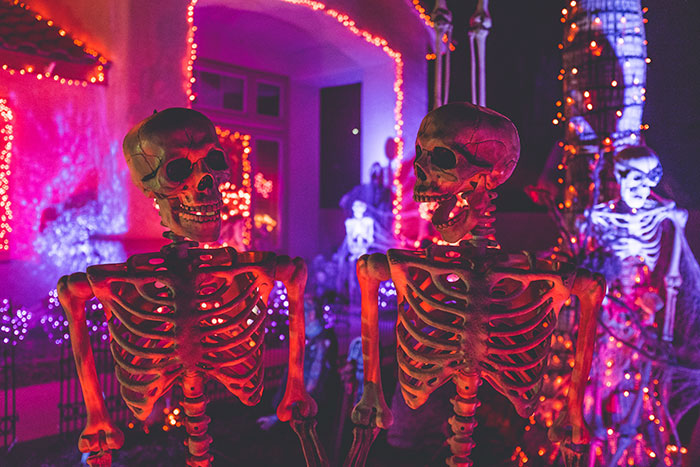 Some people have purchased trucks for the sole purpose of transporting their giant Halloween skeletons.
Some people have purchased trucks for the sole purpose of transporting their giant Halloween skeletons.
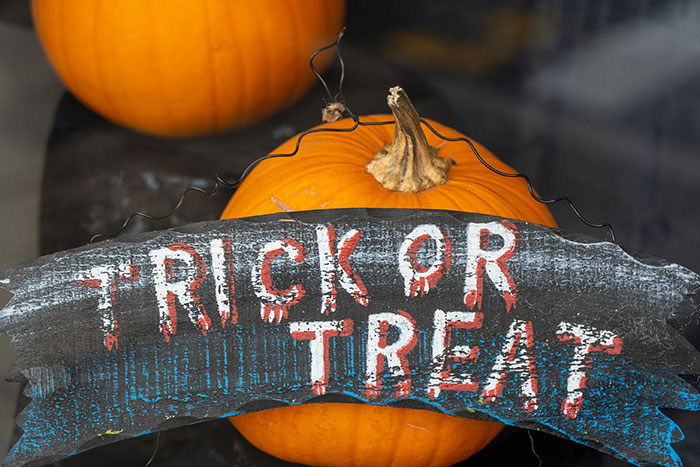 Trick-or-treating comes from "souling". In the Late Middle Ages, theologians tried to keep All Saints and All Souls strictly apart. But traditions like souling and the distribution of Soul cakes helped to fuse the feasts.
Trick-or-treating comes from "souling". In the Late Middle Ages, theologians tried to keep All Saints and All Souls strictly apart. But traditions like souling and the distribution of Soul cakes helped to fuse the feasts.
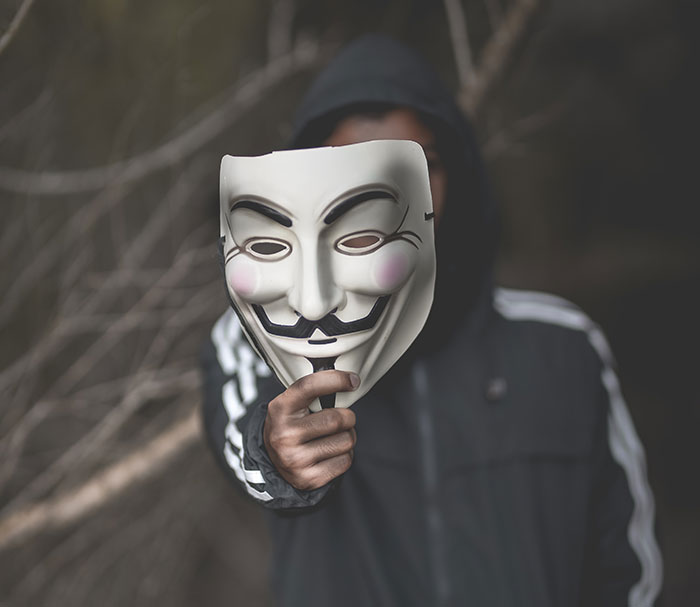 There have been laws in New York prohibiting the wearing of masks since the 1800s and in Walnut Creek, California, you can’t wear a Halloween mask in public without a license.
There have been laws in New York prohibiting the wearing of masks since the 1800s and in Walnut Creek, California, you can’t wear a Halloween mask in public without a license.
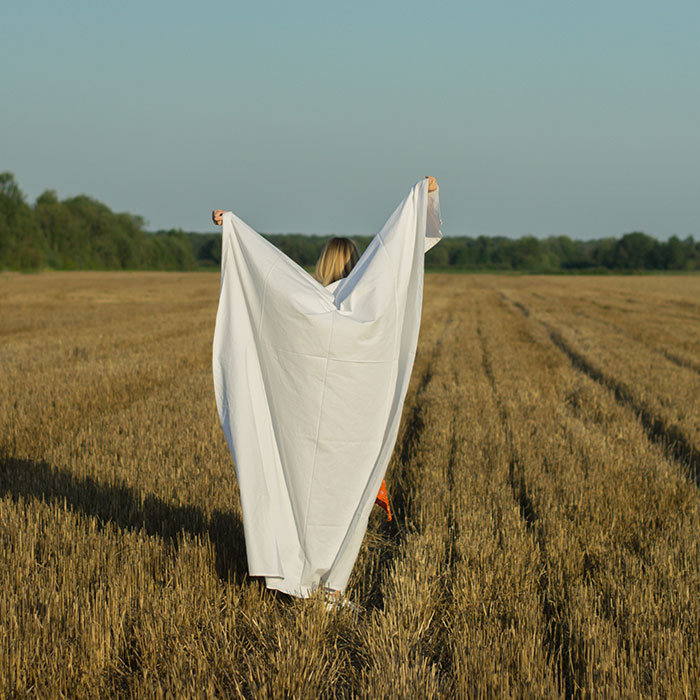 In Scotland, girls believed that wet sheets could help them see their future husbands on Halloween night.
In Scotland, girls believed that wet sheets could help them see their future husbands on Halloween night.
 The state of Illinois produced a total of 500 million pounds worth of pumpkins, making it the number one producing state.
The state of Illinois produced a total of 500 million pounds worth of pumpkins, making it the number one producing state.
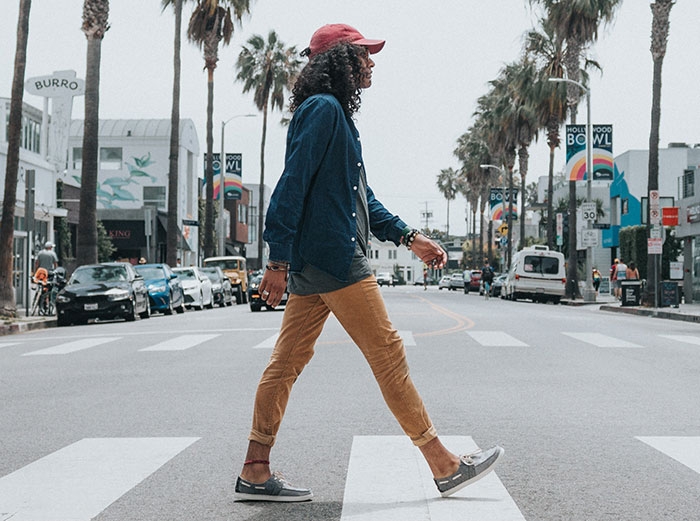 Some traditions state that walking backwards with inside-out clothes will let you see a witch on Halloween.
Some traditions state that walking backwards with inside-out clothes will let you see a witch on Halloween.
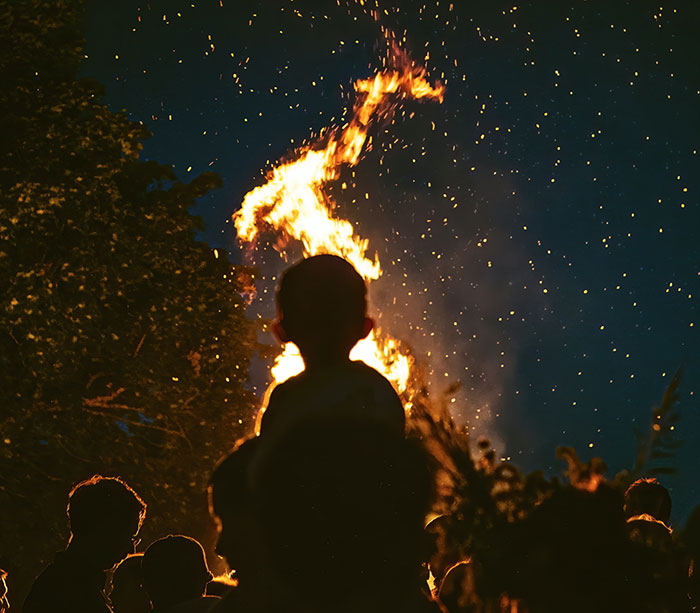 Bonfires are an important part of the Samhain pre-celebrations of Halloween. People would dance around the fires to ward off evil spirits and encourage the sun not to vanish for the winter.
Bonfires are an important part of the Samhain pre-celebrations of Halloween. People would dance around the fires to ward off evil spirits and encourage the sun not to vanish for the winter.
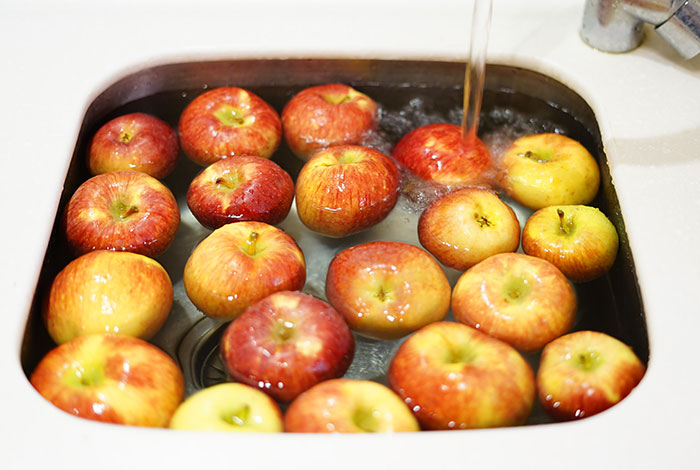 During the Middle Ages, many Halloween traditions involved women finding ways to see their future husbands. A few of these traditions include bobbing for apples.
During the Middle Ages, many Halloween traditions involved women finding ways to see their future husbands. A few of these traditions include bobbing for apples.
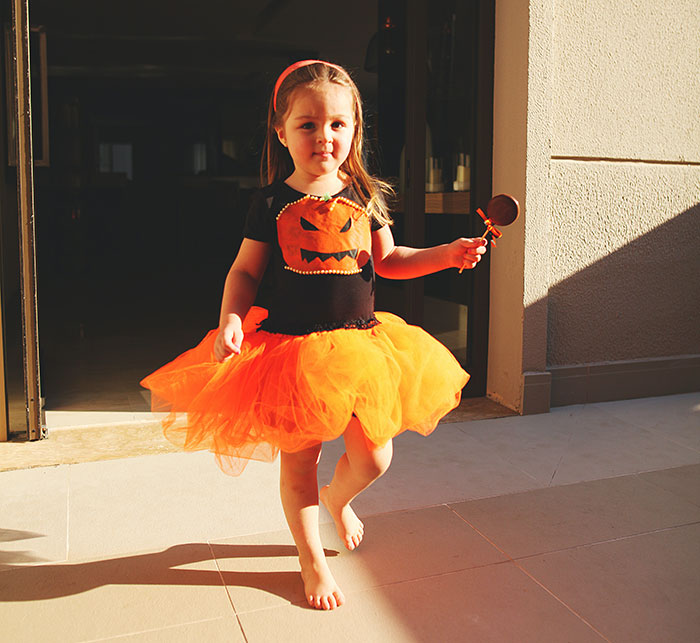 Studies have been found that younger kids tend to be more chaotic than older children during Halloween. Younger children are more impressionable, which leads them to believe that they are scarier and depicting real monsters on Halloween.
Studies have been found that younger kids tend to be more chaotic than older children during Halloween. Younger children are more impressionable, which leads them to believe that they are scarier and depicting real monsters on Halloween.
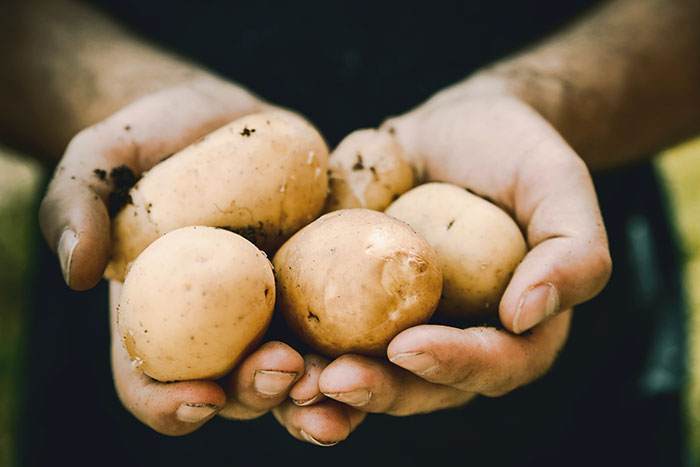 Immigrants helped popularize the holiday in the U.S. When the Irish fled the potato famine in their country in the 1840s, they brought their Halloween traditions with them.
Immigrants helped popularize the holiday in the U.S. When the Irish fled the potato famine in their country in the 1840s, they brought their Halloween traditions with them.
 A city in Canada banned teens over 16 from trick-or-treating. Anyone over the age of 16 caught trick-or-treating in Bathurst, Canada, faces up to a $200 fine.
A city in Canada banned teens over 16 from trick-or-treating. Anyone over the age of 16 caught trick-or-treating in Bathurst, Canada, faces up to a $200 fine.
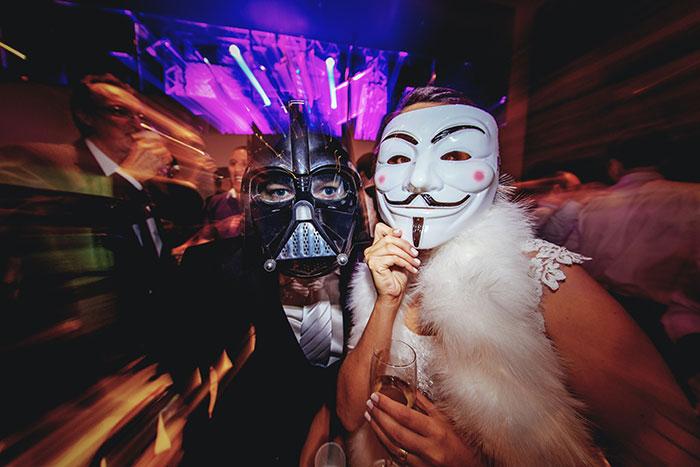 Halloween isn't just for kids anymore. According to the NRF, Roughly 55% of households without children planned to celebrate Halloween in 2021 (up from 49% back in 2020).
Halloween isn't just for kids anymore. According to the NRF, Roughly 55% of households without children planned to celebrate Halloween in 2021 (up from 49% back in 2020).
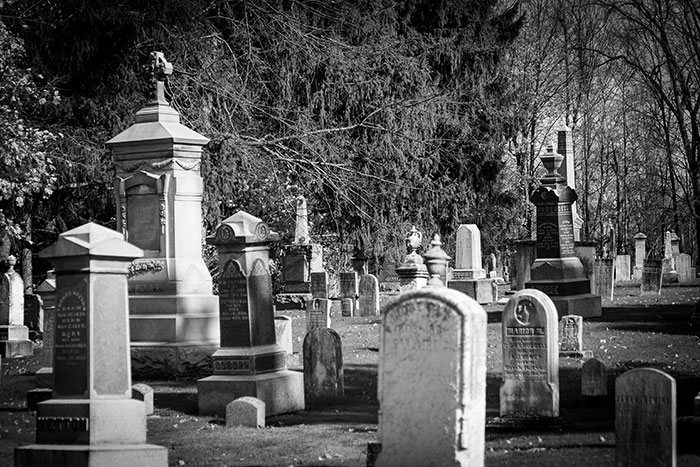 A useful precaution on Halloween is to hold your breath when walking past a graveyard so you don’t get possessed by an evil spirit.
A useful precaution on Halloween is to hold your breath when walking past a graveyard so you don’t get possessed by an evil spirit.
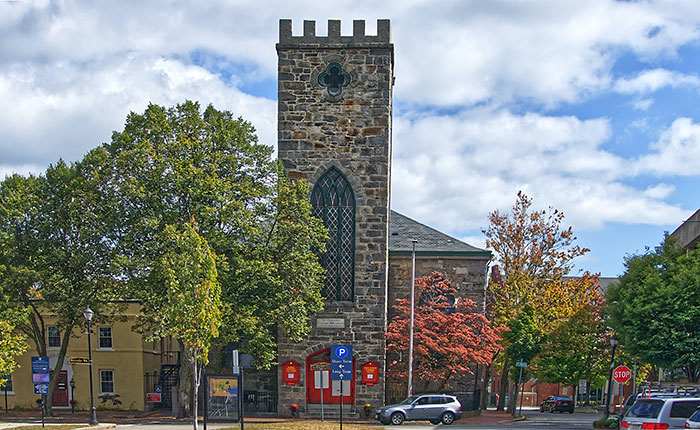 The American capitals of Anoka and Salem are self-proclaimed Halloween Capitals.
The American capitals of Anoka and Salem are self-proclaimed Halloween Capitals.
Salem is because of the witch trials. They thrive off the cruelty that happened there. It is so sad.
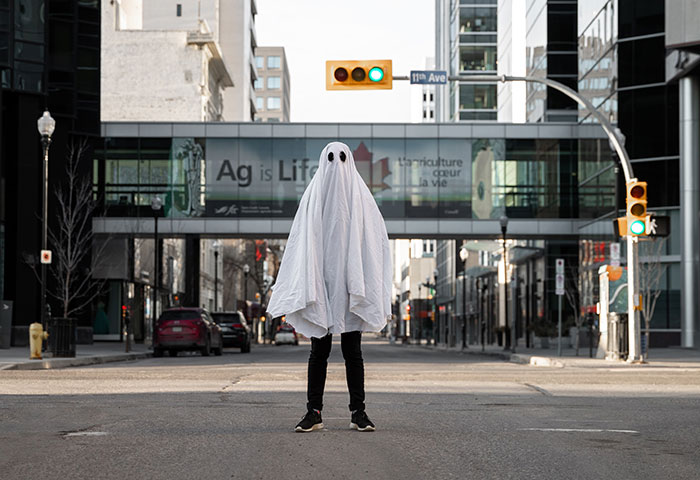 Another traditional Halloween color is white. White represents the undead and the loneliness of spirits who can not rest. White is the color of ghosts and spirits seen at night.
Another traditional Halloween color is white. White represents the undead and the loneliness of spirits who can not rest. White is the color of ghosts and spirits seen at night.
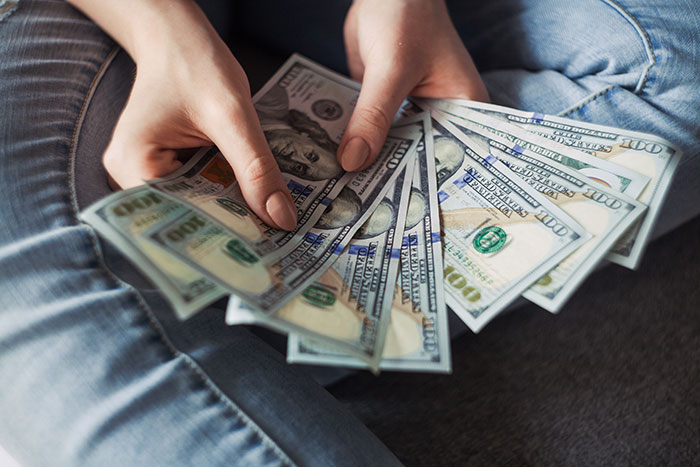 Each year, Americans spend around $86.79 for Halloween related goods. That works out to $8.8 billion in total spending.
Each year, Americans spend around $86.79 for Halloween related goods. That works out to $8.8 billion in total spending.
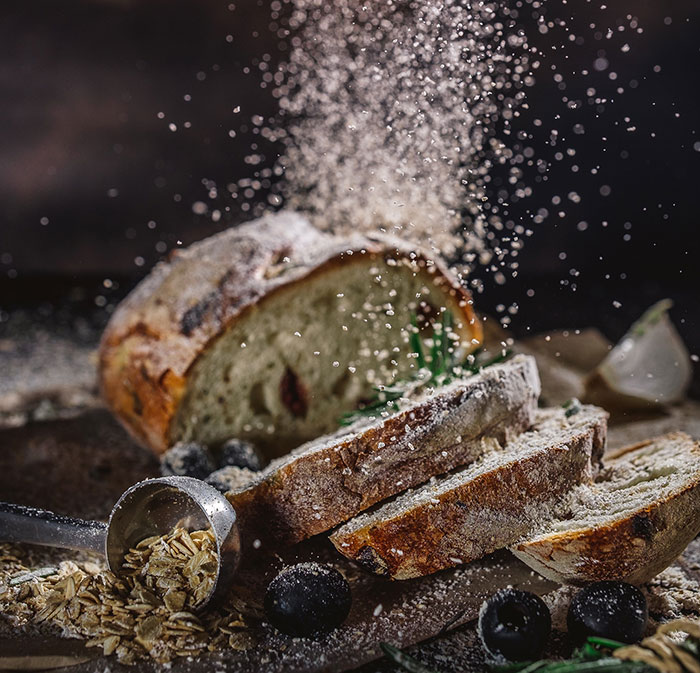 The Barmbrack bread is a traditionally baked fruit bread from Ireland. This treat is commonly made for the Halloween celebrations in the fall.
The Barmbrack bread is a traditionally baked fruit bread from Ireland. This treat is commonly made for the Halloween celebrations in the fall.
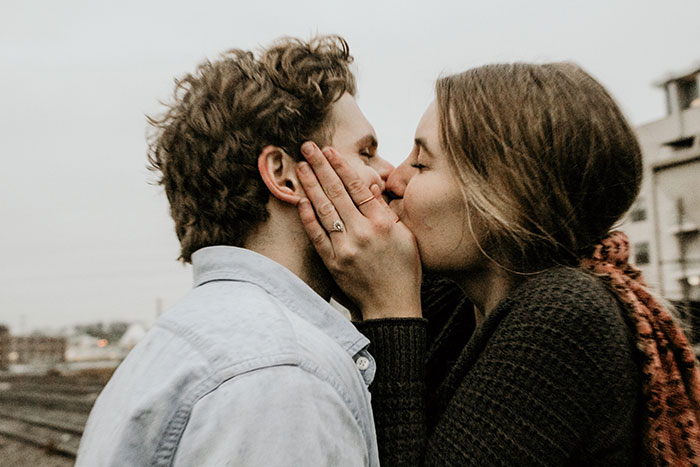 Before Halloween’s rep as a holiday focused on spirits, ghouls, and ghosts, the holiday used to be a day for romance.
Before Halloween’s rep as a holiday focused on spirits, ghouls, and ghosts, the holiday used to be a day for romance.
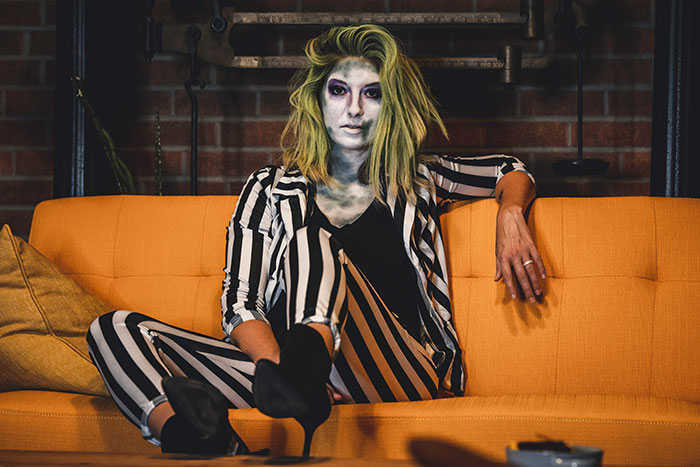 Dressing up in costumes was once a way to hide from ghosts. The tradition originated as a way for the Celtic and other European people to hide from returning spirits. People wore masks when they left home after dark to make the ghosts think they were fellow spirits, and would place bowls of food outside to keep the ghosts happy and out of their homes.
Dressing up in costumes was once a way to hide from ghosts. The tradition originated as a way for the Celtic and other European people to hide from returning spirits. People wore masks when they left home after dark to make the ghosts think they were fellow spirits, and would place bowls of food outside to keep the ghosts happy and out of their homes.
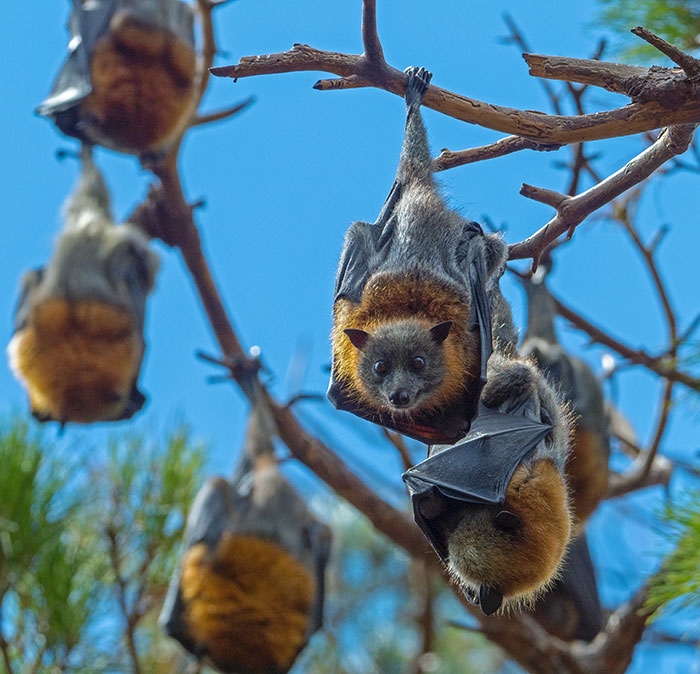 Halloween folklore deems that if you see a bat fly around a house three times or more, someone inside will die.
Halloween folklore deems that if you see a bat fly around a house three times or more, someone inside will die.
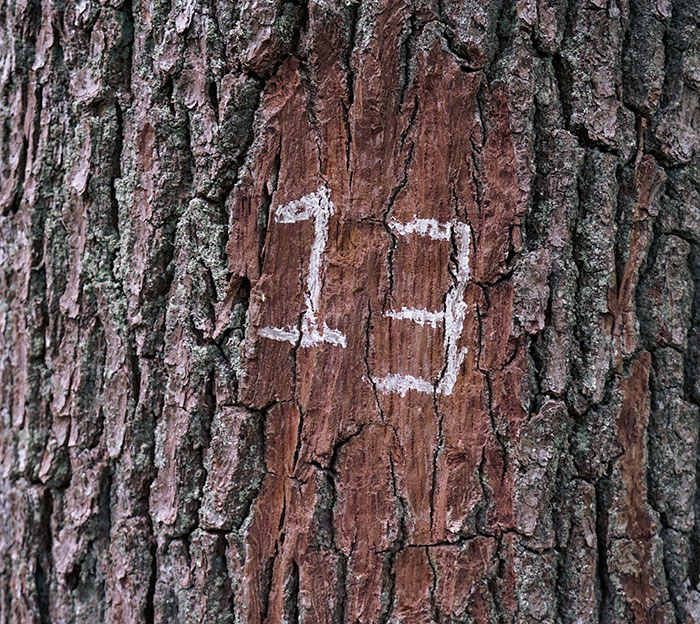 The number 13 has a history. It is deemed unlucky because of its association with Judas Iscariot, who was the 13th person to sit at the table at the Last Supper.
The number 13 has a history. It is deemed unlucky because of its association with Judas Iscariot, who was the 13th person to sit at the table at the Last Supper.
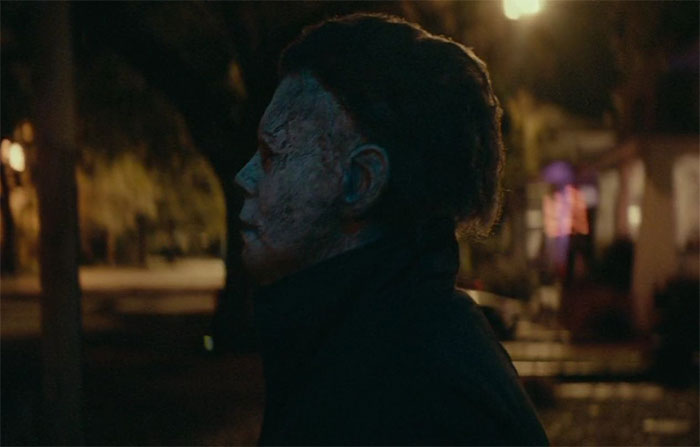 There are ten sequels/reboots/remakes to the classic horror flick, Halloween, featuring the unstoppable undead murderer, Michael Myers.
There are ten sequels/reboots/remakes to the classic horror flick, Halloween, featuring the unstoppable undead murderer, Michael Myers.
 Stephen King's horror books are the biggest sellers in the genre, and there have been 48 film adaptations, as well as 30 TV movies, series and miniseries.
Stephen King's horror books are the biggest sellers in the genre, and there have been 48 film adaptations, as well as 30 TV movies, series and miniseries.
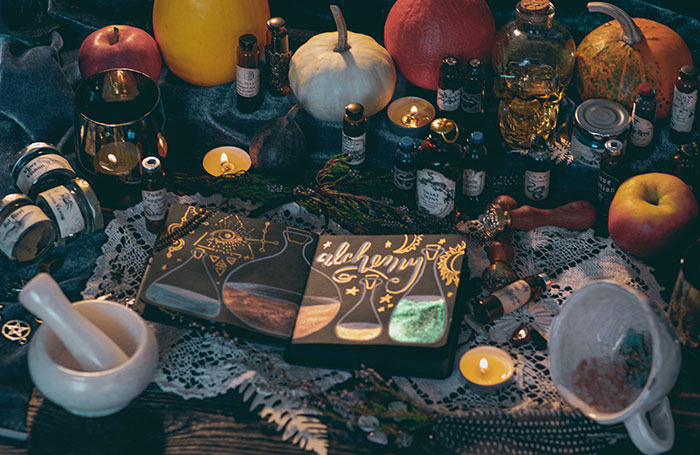 English folklore tells that during nighttime ceremonies, witches rubbed a "flying" potion on their bodies, closed their eyes and felt as though they were flying. The hallucinogenic ointment, which caused numbness, rapid heartbeat and confusion, gave them the illusion that they were soaring through the sky.
English folklore tells that during nighttime ceremonies, witches rubbed a "flying" potion on their bodies, closed their eyes and felt as though they were flying. The hallucinogenic ointment, which caused numbness, rapid heartbeat and confusion, gave them the illusion that they were soaring through the sky.

 Dark Mode
Dark Mode 

 No fees, cancel anytime
No fees, cancel anytime 





